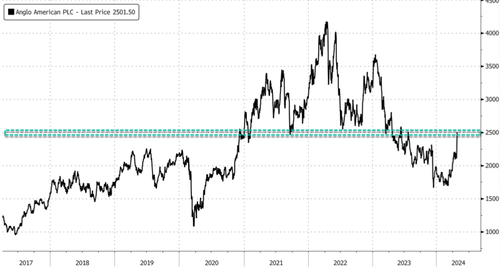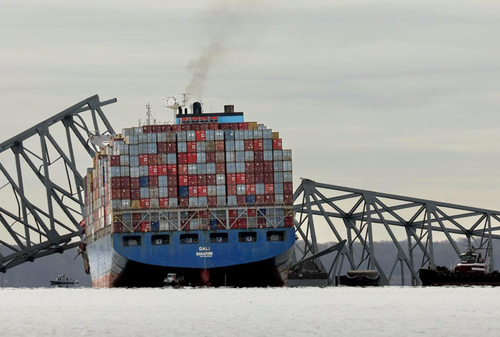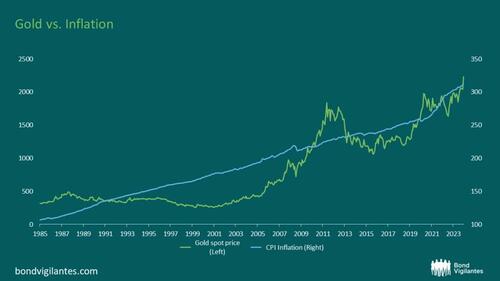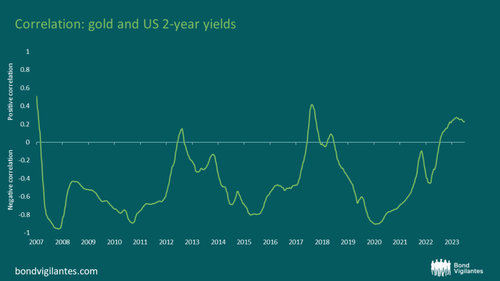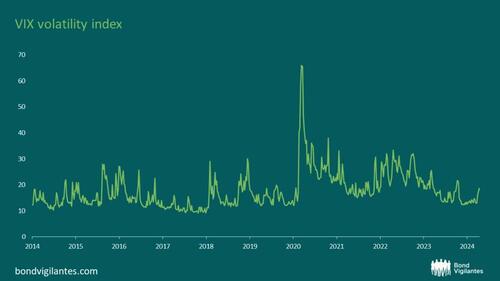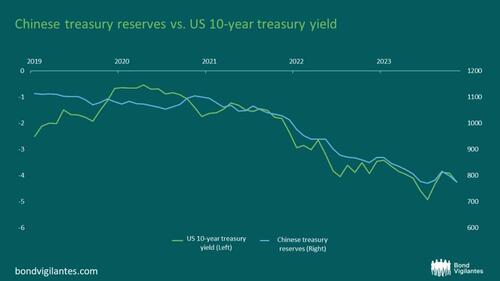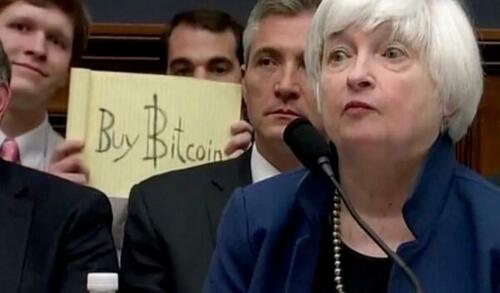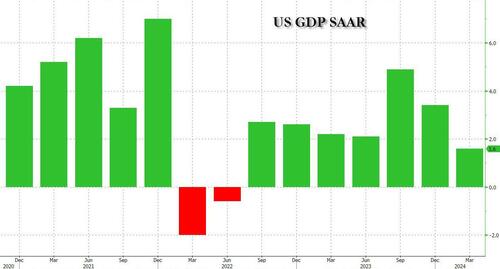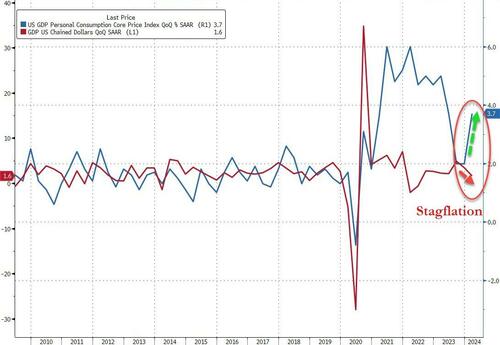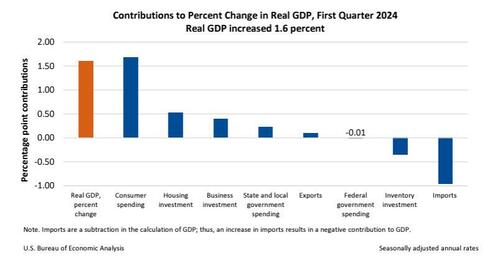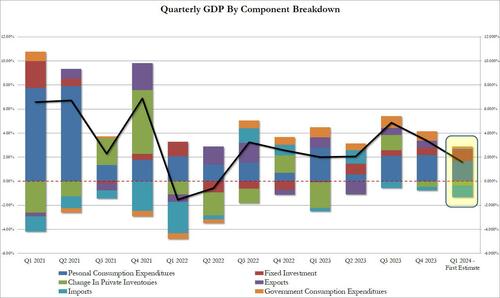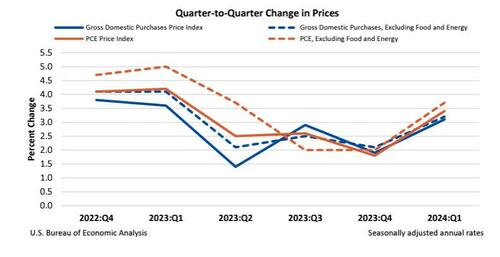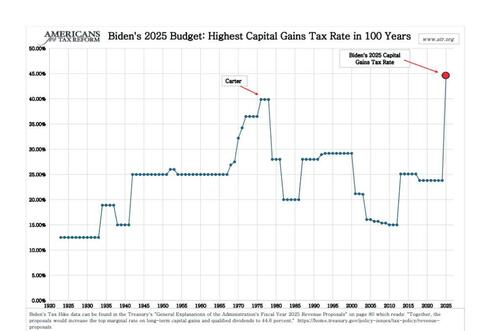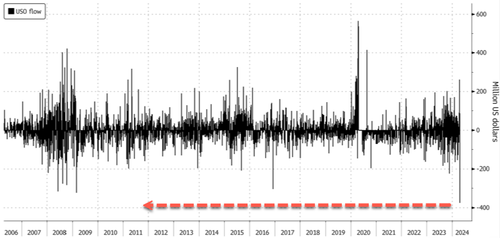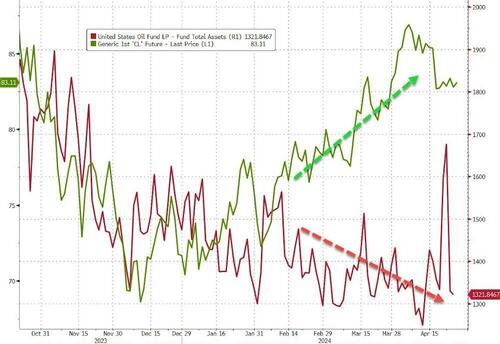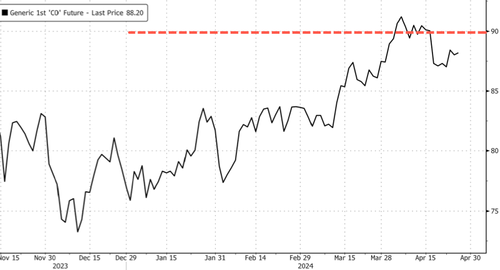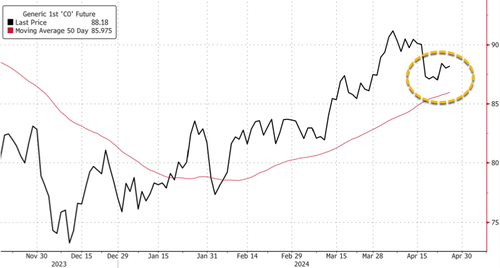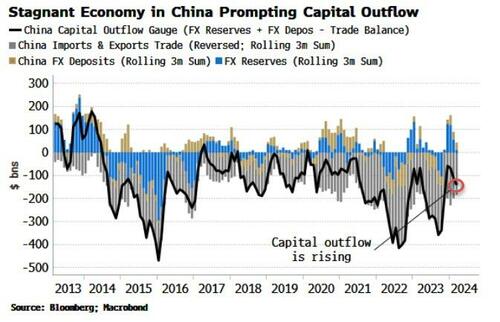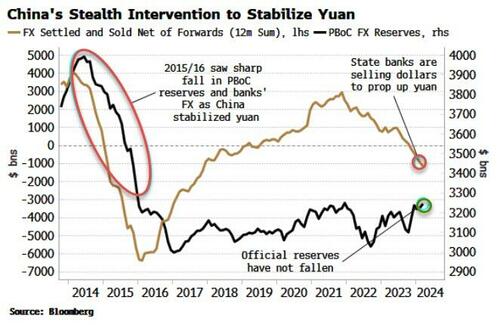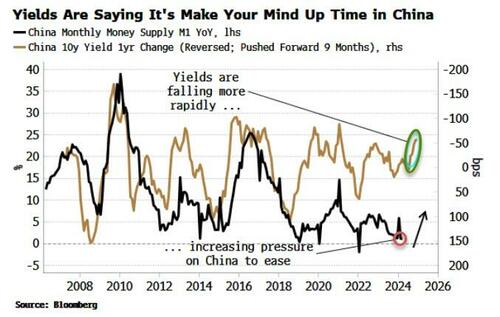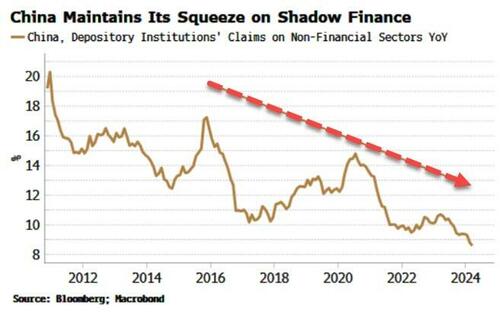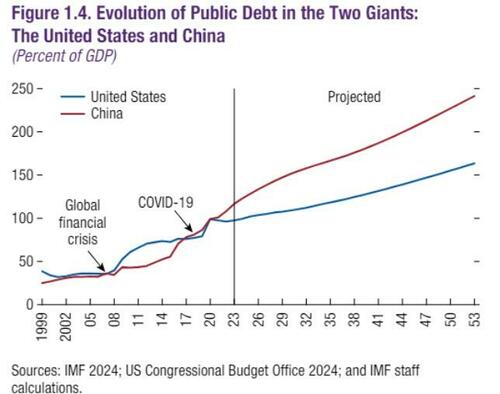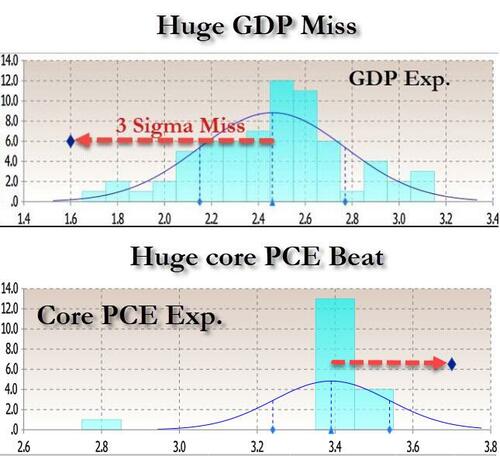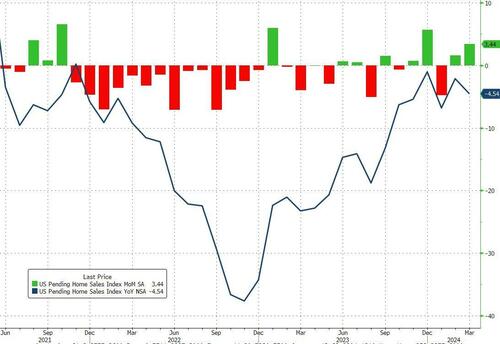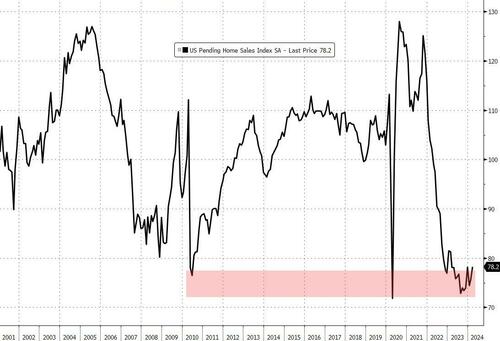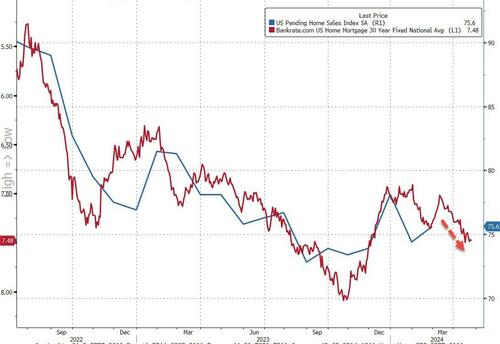Celibacy is always, shall we say, an affront to what man normally thinks. It is something that can be done, and is only credible, if there is a God and if celibacy is my doorway into the kingdom of God.
Distinction Matter - Subscribed Feeds
-
Site: RT - News
The Israeli Prime Minister has denounced as anti-Semitic the growing surge of pro-Palestine protests at American universities
Pro-Palestinian protests sweeping across university campuses in the US are anti-Semitic and must be stopped, Israeli Prime Minister Benjamin Netanyahu has said, claiming that mobs have been attacking Jewish students and faculty members.
His comments come after US police arrested more than 80 protesters on Wednesday in a crackdown on the pro-Palestine demonstrations taking place at some 21 universities in states like Massachusetts, California and New York, among others.
The students have been demanding that the US government cease all funding for the Israeli military and “stop giving them any more money to continue this genocide,” referring to the ongoing Israeli offensive against Hamas militants in Gaza.
In a video published on his X account on Wednesday, Netanyahu said that the protests on America’s college campuses are “horrific” and claimed that “anti-Semitic mobs have taken over leading universities” and are calling for “the annihilation of Israel.”
Read more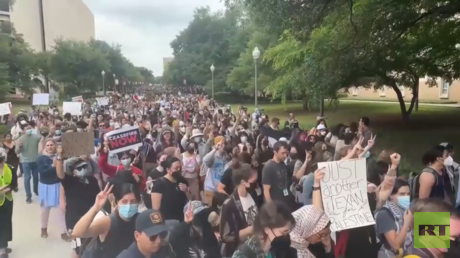 Dozens arrested at pro-Palestine protests in US (VIDEO)
Dozens arrested at pro-Palestine protests in US (VIDEO)
“This is reminiscent of what happened in German universities in the 1930s. It’s unconscionable. It has to be stopped. It has to be condemned and condemned unequivocally,” the prime minister said, in an apparent reference to the Nazi Student League, which persecuted German students and university faculty members who were not of Aryan descent or were considered political opponents of the Nazi regime.
The Israeli leader also slammed what he called the “shameful” response of some university presidents to the protests. “More has to be done,” Netanyahu urged, saying there has been an “exponential rise of antisemitism throughout America and throughout Western societies.”
The Israeli leader also claimed the student protesters “want to kill Jews wherever they are” and are chanting slogans like “Death to the Jews.”
Earlier this week, Rabbi Elie Buechler urged Jewish students of New York’s prestigious Columbia University to stay home, claiming they were no longer safe amid ongoing pro-Palestinian protests. That was after a group of Jewish counter-protesters on Sunday got into an altercation with demonstrators from a Gaza Solidarity Encampment on university grounds.
READ MORE: Rabbi tells Jews to leave prestigious American university
The White House has denounced any “calls for violence and physical intimidation targeting Jewish students and the Jewish community.”
Activists, however, have denied that the protests are anti-Semitic and say many Jewish students and organizations are involved in organizing the demonstrations. Hundreds of Columbia faculty members staged a walkout on Monday to criticize the university leadership and to express their solidarity with the protesters, after the university president called police to the campus.
History professor Christopher Brown branded the move as “unprecedented, unjustified, disproportionate, divisive and dangerous.”
A surge of demonstrations followed the deadly attack on Israel by the Palestinian armed group Hamas last October. The students are protesting Israel’s relentless retaliatory bombardment of Gaza, which has caused unprecedented destruction in the enclave and has left more than 34,000 dead, according to the Palestinian Health Ministry.
-
Site: RT - News
Environmentalist diehards reportedly manipulated experts’ conclusions to fit their own agenda
Top-ranking German government officials from the Ministry of Economic Affairs intentionally falsified experts’ reports to make it look like nuclear power was no longer viable in the country, Cicero magazine reported on Thursday.
Citing internal documents and e-mails it obtained via a court order, the media outlet claims that long-time Green Party proponents of a nuclear phase-out in high positions swept reports under the rug, or altered them, if they ran counter to their ideological convictions.
Following the disaster at Japan’s Fukushima nuclear power plant in March 2011, Germany’s parliament voted in favor of shutting down all similar facilities in the country. In April 2023, Germany’s last three operational nuclear power plants were taken offline.
In the article, Cicero claims that Patrick Graichen and Stefan Tidow, then-undersecretaries at the Economy and Environment ministries respectively, played a key role in the effort to portray the prolongation of German nuclear power plants’ operational life as dangerous.
Read more Germany spending billions to replace nuclear power
Germany spending billions to replace nuclear power
The two allegedly conspired to prevent their respective bosses from getting acquainted with any technical reports that refuted this assumption. According to the article, these documents dated March 2022 clearly pointed out that with starkly diminishing Russian gas imports, an “extension of the nuclear power plants’ operational life” could have alleviated the dire situation in Germany’s energy sector and prevented prices from skyrocketing in the coming winter.
However, the Green higher-ups, unhappy with this conclusion, allegedly rewrote the document, ramming home the message that any prolongation of the remaining nuclear power plants’ operation “is not tenable on technical-security grounds.”
Cicero claims that Economy Minister Robert Habeck most likely only saw the reworked version of the report, and not the original.
Faced with the threat of looming energy deficits, on October 17, Chancellor Olaf Scholz ordered the remaining three nuclear power plants to remain operational throughout the winter, despite warnings coming out of the Economy and Environment ministries. However, as Cicero notes, the overall trend toward the total phasing out of nuclear power-generation has remained unchanged.
READ MORE: German industry ‘moving abroad’ – Bild
With energy prices on the rise, Germany’s prized industrial sector has found itself increasingly at a disadvantage, with one in three manufacturers considering moving production overseas as a result, Bild reported in February.
-
Site: RT - News
Environmentalist diehards reportedly manipulated experts’ conclusions to fit their own agenda
Top-ranking German government officials from the Ministry of Economic Affairs intentionally falsified experts’ reports to make it look like nuclear power was no longer viable in the country, Cicero magazine reported on Thursday.
Citing internal documents and e-mails it obtained via a court order, the media outlet claims that long-time Green Party proponents of a nuclear phase-out in high positions swept reports under the rug, or altered them, if they ran counter to their ideological convictions.
Following the disaster at Japan’s Fukushima nuclear power plant in March 2011, Germany’s parliament voted in favor of shutting down all similar facilities in the country. In April 2023, Germany’s last three operational nuclear power plants were taken offline.
In the article, Cicero claims that Patrick Graichen and Stefan Tidow, then-undersecretaries at the Economy and Environment ministries respectively, played a key role in the effort to portray the prolongation of German nuclear power plants’ operational life as dangerous.
Read more Germany spending billions to replace nuclear power
Germany spending billions to replace nuclear power
The two allegedly conspired to prevent their respective bosses from getting acquainted with any technical reports that refuted this assumption. According to the article, these documents dated March 2022 clearly pointed out that with starkly diminishing Russian gas imports, an “extension of the nuclear power plants’ operational life” could have alleviated the dire situation in Germany’s energy sector and prevented prices from skyrocketing in the coming winter.
However, the Green higher-ups, unhappy with this conclusion, allegedly rewrote the document, ramming home the message that any prolongation of the remaining nuclear power plants’ operation “is not tenable on technical-security grounds.”
Cicero claims that Economy Minister Robert Habeck most likely only saw the reworked version of the report, and not the original.
Faced with the threat of looming energy deficits, on October 17, Chancellor Olaf Scholz ordered the remaining three nuclear power plants to remain operational throughout the winter, despite warnings coming out of the Economy and Environment ministries. However, as Cicero notes, the overall trend toward the total phasing out of nuclear power-generation has remained unchanged.
READ MORE: German industry ‘moving abroad’ – Bild
With energy prices on the rise, Germany’s prized industrial sector has found itself increasingly at a disadvantage, with one in three manufacturers considering moving production overseas as a result, Bild reported in February.
-
Site: RT - News
Environmentalist diehards reportedly manipulated experts’ conclusions to fit their own agenda
Top-ranking German government officials from the Ministry of Economic Affairs intentionally falsified experts’ reports to make it look like nuclear power was no longer viable in the country, Cicero magazine reported on Thursday.
Citing internal documents and e-mails it obtained via a court order, the media outlet claims that long-time Green Party proponents of a nuclear phase-out in high positions swept reports under the rug, or altered them, if they ran counter to their ideological convictions.
Following the disaster at Japan’s Fukushima nuclear power plant in March 2011, Germany’s parliament voted in favor of shutting down all similar facilities in the country. In April 2023, Germany’s last three operational nuclear power plants were taken offline.
In the article, Cicero claims that Patrick Graichen and Stefan Tidow, then-undersecretaries at the Economy and Environment ministries respectively, played a key role in the effort to portray the prolongation of German nuclear power plants’ operational life as dangerous.
Read more Germany spending billions to replace nuclear power
Germany spending billions to replace nuclear power
The two allegedly conspired to prevent their respective bosses from getting acquainted with any technical reports that refuted this assumption. According to the article, these documents dated March 2022 clearly pointed out that with starkly diminishing Russian gas imports, an “extension of the nuclear power plants’ operational life” could have alleviated the dire situation in Germany’s energy sector and prevented prices from skyrocketing in the coming winter.
However, the Green higher-ups, unhappy with this conclusion, allegedly rewrote the document, ramming home the message that any prolongation of the remaining nuclear power plants’ operation “is not tenable on technical-security grounds.”
Cicero claims that Economy Minister Robert Habeck most likely only saw the reworked version of the report, and not the original.
Faced with the threat of looming energy deficits, on October 17, Chancellor Olaf Scholz ordered the remaining three nuclear power plants to remain operational throughout the winter, despite warnings coming out of the Economy and Environment ministries. However, as Cicero notes, the overall trend toward the total phasing out of nuclear power-generation has remained unchanged.
READ MORE: German industry ‘moving abroad’ – Bild
With energy prices on the rise, Germany’s prized industrial sector has found itself increasingly at a disadvantage, with one in three manufacturers considering moving production overseas as a result, Bild reported in February.
-
Site: RT - News
Environmentalist diehards reportedly manipulated experts’ conclusions to fit their own agenda
Top-ranking German government officials from the Ministry of Economic Affairs intentionally falsified experts’ reports to make it look like nuclear power was no longer viable in the country, Cicero magazine reported on Thursday.
Citing internal documents and e-mails it obtained via a court order, the media outlet claims that long-time Green Party proponents of a nuclear phase-out in high positions swept reports under the rug, or altered them, if they ran counter to their ideological convictions.
Following the disaster at Japan’s Fukushima nuclear power plant in March 2011, Germany’s parliament voted in favor of shutting down all similar facilities in the country. In April 2023, Germany’s last three operational nuclear power plants were taken offline.
In the article, Cicero claims that Patrick Graichen and Stefan Tidow, then-undersecretaries at the Economy and Environment ministries respectively, played a key role in the effort to portray the prolongation of German nuclear power plants’ operational life as dangerous.
Read more Germany spending billions to replace nuclear power
Germany spending billions to replace nuclear power
The two allegedly conspired to prevent their respective bosses from getting acquainted with any technical reports that refuted this assumption. According to the article, these documents dated March 2022 clearly pointed out that with starkly diminishing Russian gas imports, an “extension of the nuclear power plants’ operational life” could have alleviated the dire situation in Germany’s energy sector and prevented prices from skyrocketing in the coming winter.
However, the Green higher-ups, unhappy with this conclusion, allegedly rewrote the document, ramming home the message that any prolongation of the remaining nuclear power plants’ operation “is not tenable on technical-security grounds.”
Cicero claims that Economy Minister Robert Habeck most likely only saw the reworked version of the report, and not the original.
Faced with the threat of looming energy deficits, on October 17, Chancellor Olaf Scholz ordered the remaining three nuclear power plants to remain operational throughout the winter, despite warnings coming out of the Economy and Environment ministries. However, as Cicero notes, the overall trend toward the total phasing out of nuclear power-generation has remained unchanged.
READ MORE: German industry ‘moving abroad’ – Bild
With energy prices on the rise, Germany’s prized industrial sector has found itself increasingly at a disadvantage, with one in three manufacturers considering moving production overseas as a result, Bild reported in February.
-
Site: LifeNews
Myth: Abortion is 14 times safer than childbirth.
Fact: Studies from countries with better data show that a woman is at least three times as likely to die from any cause following abortion than after childbirth.
The false claim that abortion is 14 times safer than childbirth arose from a 2012 journal article by two vocal abortion advocates, Elizabeth Raymond and David Grimes (henceforth “R&G”).[1] Despite being debunked in the dozen years since,[2] it continues to be repeated by pro-abortion media advocates. Following are numerous reasons this statement is false and not data-driven.
1. This comparison is made using four disparate numbers, none of which can be calculated accurately (abortion-related deaths, legal abortions, maternal deaths, and live births).
Different denominators are being compared: Abortion-related deaths are compared to 100,000 legal abortions, whereas all maternal deaths are compared to 100,000 live births. The relevance of these facts to the R&G myth will be clarified below.
2. Even the former director of the Center for Disease Control and Prevention (CDC), Dr. Julie Louise Gerberding, demonstrated that a comparison between the two statistics is inappropriate. In 2004, she wrote that maternal mortality ratios and abortion mortality rates “are conceptually different and are used by CDC for different public health purposes.”[3]
3. The number of legal abortions in the U.S. is unknown.
- The estimated number of legally induced abortions is voluntarily provided by local and state health departments to the CDC. In 2020, the CDC documented 620,327 abortions.[4]
- The number of abortions is also estimated by the Guttmacher Institute, which directly surveys abortion providers, but a large disparity is seen between the two sources. In 2020, the Guttmacher Institute documented 930,160 abortions,[5] nearly 50% more abortions than the CDC reported.
- &G used Guttmacher-derived legal abortion numbers for their denominator rather than CDC numbers (even though they used CDC numbers for abortion-related deaths), allowing the larger numbers in the denominator to dilute the numerator.
4. Abortion-related deaths are undercounted. (See CLI paper “Handbook of Maternal Mortality” for extensive discussion.)
- The CDC relies primarily upon death certificate documentation or deaths that happen to come to its attention in order to detect abortion-related deaths, but there are many reasons that these deaths may not be documented.
- Due to private payment for most abortions and women’s tendency to hide an abortion history, a prior abortion is often not known by the certifier.[6]
- Abortion complication reporting is not required by federal law and ideologically driven individuals may misrepresent, hide, or fail to report abortion-related deaths.[7]
- Deaths from mental health causes (suicide, homicide, accidents due to high risk-taking behavior, substance and alcohol abuse and overdose) are rarely documented as abortion-related on death certificates,[8] even though several meta-analyses have documented increased risks of mental health complications such as anxiety, depression, substance and alcohol abuse, and self-harm following abortion compared to childbirth.[9]
REACH PRO-LIFE PEOPLE WORLDWIDE! Advertise with LifeNews to reach hundreds of thousands of pro-life readers every week. Contact us today.
5. The total number of pregnancies in the U.S. is unknown because early pregnancy losses are not recorded.
- Thus, the CDC uses the denominator of 100,000 live births because this is measured by mandatory birth certificates. This becomes a “maternal mortality ratio,” not “maternal mortality rate,” because the denominator does not include all the “at-risk” individuals (those who have experienced a pregnancy).
- This causes maternal deaths that are associated with early pregnancy events (miscarriages, ectopic pregnancies, gestational trophoblastic disease, and induced abortions) to be represented in the numerator but not the denominator, artificially inflating the numerator. Only 2/3 of maternal deaths are associated with a live birth or fetal death (beyond 20 weeks of gestation).[10]
- It should also be noted that an abortion-related death is counted in both
6. Maternal mortality data is also inaccurate.[11]
- There are several disparate maternal mortality reporting systems in the U.S. using different methods of data collection and different temporal definitions.
- CDC’s National Vital Statistics System (NVSS) determines pregnancy-related deaths based on death certificate ICD-O coding during or within six weeks of a pregnancy.[12]
- CDC’s Pregnancy Mortality Surveillance System (PMSS) determines pregnancy-related death based on death certificate documentation of pregnancy within one year and review of the woman’s medical records to determine “pregnancy-relatedness” – that is, whether it was caused or exacerbated by the pregnancy or its management.[13]
- Not surprisingly, given differing data sources and timelines, there is little correlation between the statistics reported by NVSS and PMSS.[14]
- Using death certificates as the initial source of detecting pregnancy-associated deaths does not cast a broad enough net, because at least 38-50% of all U.S. maternal deaths are not documented on death certificates.[15]
- In order to improve detection of pregnancy-associated deaths, the CDC recommended adding a “pregnancy check-box” to death certificates, but this was variably implemented by the states over a prolonged period, leading to non-comparable statistics for over a decade. Although more maternal deaths were detected, false positives were also noted to be frequent, leading to continued data deficiencies.[16]
- Additionally, Maternal Mortality Review Committees (MMRC) have convened at local, state, regional, and federal levels to comprehensively review reported maternal deaths. Although these multidisciplinary committees will likely provide better quality data, the most recent collaborative report from 2019 only included the analysis of 36 such committees (failing to include data from 14 states and the District of Columbia), so a complete analysis of U.S. data from all states remains elusive.[17]
7. Higher quality data can be obtained from records-linkage studies since all abortions can be detected (usually through single-payer insurance coverage in European countries) and compared to all subsequent deaths within one year in reproductive aged women. R&G chose not to include international data and ignored the one U.S. study using this methodology. These better-quality studies demonstrate far more deaths in the year following abortion than childbirth, providing strong evidence that abortion is not safer than childbirth.
- A records-linkage study of California Medicaid recipients found that a woman was 62% more likely to die from any cause in the years following abortion compared to childbirth, 82% more likely to die in an accident, and 154% more likely to commit suicide.[18]
- A number of large studies from Finland found that the maternal mortality rate following abortion was 3-4 times the maternal mortality rate following birth.[19] The rate of suicide following abortion was six times the rate following birth, the rate of accidental death was five times the rate following birth, and the rate of homicide was over ten times the rate following birth.[20]
- The Finnish data demonstrate the inherent unreliability of utilizing death certificate documentation to detect maternal deaths. Despite meticulous record-keeping in that country, death certificate documentation alone detects only 26% of deaths after a live birth or stillbirth, 12% of deaths following miscarriage or ectopic pregnancy, and just 1-6% of deaths following induced abortion.[21]
- Additionally, two international Systematic Reviews comparing all available studies were available at the time R&G published their paper but were not referenced by these researchers.[22]
- A 2017 meta-analysis of available records-linkage studies documented the increased risk of death after abortion compared to birth. One study included in the meta-analysis documented a dose-effect, as each additional abortion increased a woman’s risk of dying by around 50%.[23]
- A records-linkage study using Danish data from 1980-2004 revealed that after a first-trimester induced abortion, a woman had twice the likelihood of death within 180 days, and a 331% increased likelihood of death within 180 days for second-/third-trimester abortion compared to childbirth.[24]
8. In the politically polarized climate following the Supreme Court’s decision in Dobbs v. Jackson Women’s Health, reversing Roe v. Wade and allowing legislatures to regulate abortion, some have falsely stated that doctors may not be able to provide quality care for obstetric complications, even though all states with pro-life protections allow an exception if abortion is necessary in life-threatening emergencies. (See CLI articles, “Abortion Policy Allows Physicians to Intervene to Protect a Mother’s Life” and “Pro-Life Laws Protect Mom and Baby: Pregnant Women’s Lives are Protected in All States” for more discussion.)
9. Allegations have arisen that state limits on abortion will increase maternal mortality. Fortunately, there are many reasons to expect abortion restrictions to decrease, rather than increase, maternal mortality. (See CLI articles “Twelve Reasons Women’s Health and Maternal Mortality Will Not Worsen, and May Improve, in States with Abortion Limits” and “Response to Media Allegations that Abortion Restrictions Cause Maternal Mortality and Female Suicides” for more discussion.)
[1] Raymond EG, Grimes DA. The comparative safety of legal induced abortion and childbirth in the United States. Obstet Gynecol 2012;119:215–219.
[2] Calhoun B. Systematic Review: The maternal mortality myth in the context of legalized abortion. The Linacre Quarterly. 2013;80(3):264-276; Reardon DC, et al. Deaths associated with abortion compared to childbirth-A review of new and old data and the medical and legal implications. The Journal of Contemporary Health Law and Policy. 2004;20(2):279-327.
[3] Letter from Julie Louise Gerberding to Walter Weber, July 20, 2004. http://afterabortion.org/pdf/CDCResponsetoWeberReAbortionStats-Gerberding%20Reply.pdf.
[4] Kortsmit K, Nguyen AT, Mandel MG, et al. Abortion Surveillance — United States, 2020. MMWR Surveill Summ 2022; 71(No. SS-10):1–27. DOI: http://dx.doi.org/10.15585/mmwr.ss7110a1.
[5] Jones RK, Kirstein M, Philbin J. Abortion Incidence and Service Availability in the United States, 2020. Nov 2022. Perspectives on Sexual and Reproductive Health 54(4):128-141. Available at https://onlinelibrary.wiley.com/doi/10.1363/psrh.12215.
[6] Desai S, Lindberg LD, Maddow-Zimet I, Kost K. The Impact of Abortion Underreporting on Pregnancy Data and Related Research. Matern Child Health J. 2021;25(8):1187-1192. doi:10.1007/s10995-021-03157-9; Udry JR, Gaughan M, Schwingl PJ, van den Berg BJ. A medical record linkage analysis of abortion underreporting. Fam Plann Perspect. 1996;28(5):228-231.
[7] Grossman D, Perritt J, Grady D. The Impending Crisis of Access to Safe Abortion Care in the US. JAMA Intern Med. 2022;182(8):793-795. doi:10.1001/jamainternmed.2022.2893
[8] Gissler M, Kauppila R, Meriläinen J, Toukomaa H, Hemminki E. Pregnancy-associated deaths in Finland 1987-1994–definition problems and benefits of record linkage. Acta Obstet Gynecol Scand. 1997;76(7):651-657. doi:10.3109/00016349709024605; Walker D, Campero L, Espinoza H, et al. Deaths from complications of unsafe abortion: misclassified second trimester deaths. Reprod Health Matters. 2004;12(24 Suppl):27-38. doi:10.1016/s0968-8080(04)24019-8
[9] Coleman PK. Abortion and mental health: quantitative synthesis and analysis of research published 1995-2009. Br J Psychiatry, 2011;199:180-186; Fergusson DM, Horwood LJ, and Boden JM. Does abortion reduce the mental health risks of unwanted or unintended pregnancy? A re-appraisal of the evidence. Aus NZ J Psych, 2013;47(9):819-827; Fergusson DM, Horwood LJ, Boden JM. Abortion and mental health disorders: evidence from a 30-year longitudinal study. Br J Psychiatry. 2008;193(6):444-451; Sullins DP. Abortion, substance abuse and mental health in early adulthood: Thirteen-year longitudinal evidence from the United States. Sage Open Medicine. 2016;4:1-11; Sullins DP. Affective and Substance Abuse Disorders Following Abortion by Pregnancy Intention in the United States: A Longitudinal Cohort Study. Medicina (B Aires) [Internet]. 2019;55(11):1–21.
[10] Horon IL. Underreporting of maternal deaths on death certificates and the magnitude of the problem of maternal mortality. Am J Public Health 2005;95:478-482
[11] M.F. MacDorman, et al., “Recent Increases in the U.S. Maternal Mortality Rate: Disentangling Trends from Measurement Issues,” Obstetrics & Gynecology 128:3 (2016): 447-455; Horon IL. Underreporting of maternal deaths on death certificates and the magnitude of the problem of maternal mortality. Am J Public Health 2005;95:478-482; Deneux-Tharaux C, Berg C, Bouvier-Colle MH, et al. Underreporting of pregnancy-related mortality in the United States and Europe. Obstet Gynecol 2005;106(4):684-692; Joseph KS, Lisonkova S, Boutin A, et al. Maternal mortality in the United States: are the high and rising rates due to changes in obstetrical factors, maternal medical conditions, or maternal mortality surveillance? Am J Obstet Gynecol. doi:10.1016/j.ajog.2023.12.038
[12] Hoyert DL. Maternal mortality rates in the United States, 2021. NCHS Health E-Stats. 2023. doi:10.15620/cdc:124678
[13] Pregnancy Mortality Surveillance System. Centers for Disease Control and Prevention. Updated March 23, 2023. Accessed April 3, 2024. https://www.cdc.gov/reproductivehealth/maternal-mortality/pregnancy-mortality-surveillance-system.htm
[14] MacKay A, Berg CJ, Duran C, et al. An assessment of pregnancy-related mortality in the United States. Pediatric & Perinatal Epidemiology 2005;19:206–214; Hoyert DL. Maternal Mortality and Related Concepts. Vital & Health Statistics. Series 3, Analytical and Epidemiological Studies. 2007;33:1-13. Available at https://europepmc.org/article/med/17460868, accessed August 9, 2022.
[15] Horon IL, Cheng D, Chang J, et al. Underreporting of Maternal Deaths on Death Certificates and the Magnitude of the Problem of Maternal Mortality. AJ of Public Health. 2005;95:478-82; Dye TD, Gordon H. Retrospective maternal mortality case ascertainment in West Virginia, 1985 to 1989. Am J Obstet Gynecol. 1992;167(1)72-6.
[16] Hoyert DL, Minino AM. Maternal mortality in the United States: Changes in coding, publication, and data release, 2018. National Vital Statistics Reports; vol 69 no 2. Hyattsville, MD: National Center for Health Statistics. 2020; Joseph KS, Lisonkova S, Boutin A, et al. Maternal mortality in the United States: Are the high and rising rates due to changes in obstetrical factors, maternal medical conditions, or maternal mortality surveillance? Am J Obstet Gynecol. doi:10.1016/j.ajog.2023.12.038
[17] Trost SL, Beauregard J, Njie F, et al. Pregnancy-Related Deaths: Data from Maternal Mortality Review Committees in 36 US states, 2017-2019. Atlanta, GA: Centers for Disease Control and Prevention, US Department of Health and Human Services; 2022. Available at: https://www.cdc.gov/reproductivehealth/maternal-mortality/erase-mm/data-mmrc.html.
[18] Reardon DC, Ney PG, Scheuren FJ, Cougle JR, Coleman, PK, Strahan T. Deaths associated with pregnancy outcome: a record linkage study of low income women. Southern Medical Journal, 2002;95(8):834-841.
[19] Gissler M, Berg C, Bouvier-Colle MH, Buekens P. Pregnancy-associated mortality after birth, spontaneous abortion, or induced abortion in Finland, 1987-2000. Am J Obstet Gynecol. 2004;190(2):422-427. doi:10.1016/j.ajog.2003.08.044; Gissler M, Kauppila R, Meriläinen J, Toukomaa H, Hemminki E. Pregnancy-associated deaths in Finland 1987-1994—definition problems and benefits of record linkage. Acta Obstet Gynecol Scand. 1997;76(7):651-657. Doi:10.3109/00016349709024605.
[20] Gissler M, Hemminki E, Lönnqvist J. Suicides after pregnancy in Finland, 1987-94: register linkage study. BMJ. 1996;313(7070):1431-1434. doi:10.1136/bmj.313.7070.1431; Gissler M, Berg C, Bouvier-Colle MH, Buekens P. Injury deaths, suicides and homicides associated with pregnancy, Finland 1987-2000. Eur J Public Health. 2005;15(5):459-463. doi:10.1093/eurpub/cki042; Gissler M, Kauppila R, Meriläinen J, Toukomaa H, Hemminki E. Pregnancy-associated deaths in Finland 1987-1994–definition problems and benefits of record linkage. Acta Obstet Gynecol Scand. 1997;76(7):651-657. doi:10.3109/00016349709024605
[21] Reardon DC, Thorp JM. Pregnancy associated death in record linkage studies relative to delivery, termination of pregnancy, and natural losses: A systematic review with a narrative synthesis and meta-analysis. SAGE Open Med. 2017;5:2050312117740490. Published 2017 Nov 13. doi:10.1177/2050312117740490
[22] Reardon DC, Strahan TW, Thorp JM, Shuping MW. Deaths associated with abortion compared to childbirth: a review of new and old data and the medical and legal implications. The Journal of Contemporary Health Law & Policy 2004; 20(2):279-327; Shadigian EM; Bauer ST. Pregnancy-Associated Death: A Qualitative Systematic Review of Homicide and Suicide. Obstetrical & Gynecological Survey. 2005. 60:183-190.
[23] Reardon D, Thorp J. Pregnancy associated death in record linkage studies relative to delivery, termination of pregnancy, and natural losses: A systematic review with a narrative synthesis and meta-analysis. Sage Open Medicine. 2017;5:1-17.
[24] Reardon DC, Coleman PK. Short and long term mortality rates associated with first pregnancy outcome: Population register based study for Denmark 1980-2004. Med Sci Monit 2012;18(9):71-76; Coleman PK, Reardon DC, Calhoun BC. Reproductive History Patterns and Long-Term Mortality Rates: A Danish population-based record linkage study. Eur J of Public Health. 2013;23(4):569-574.
LifeNews Note: Ingrid Skop, M.D., F.A.C.O.G., is Vice President and Director of Medical Affairs for the Charlotte Lozier Institute.

The post Studies Confirm Women are Three Times More Likely to Die Following Abortion Than Childbirth appeared first on LifeNews.com.
-
Site: Zero HedgeAnglo American Does Not Find BHP's $39 Billion Takeover Bid 'Attractive': ReportTyler Durden Thu, 04/25/2024 - 12:55
Update (1255ET):
Speaking on condition of anonymity, two sources close to top Anglo American investors told Reuters that BHP Group's proposed all-share deal, valued at £31.1 billion ($38.9 billion), is not attractive.
One source said the offer did not address the complexities of demerging the Anglo American Platinum and Kumba Iron Ore businesses in South Africa.
Reuters expects Anglo's board to respond in the coming days. BHP has until May 22 to submit a binding bid.
A successful takeover would give BHP control of about 10% of the world's copper mining supply. There are talks of dwindling supply and soaring demand in the coming years because of electrification trends, such as the proliferation of generative AI data centers, electric vehicles, and onshoring manufacturing.
* * *
The world's largest global diversified miner, BHP Group, is making a monster bet on surging future copper demand with the proposed takeover of Anglo American Plc. The bet is based on the thesis that the world's power grids need a major overhaul and that the electrification of the economy will unleash new demand for base metals. This also comes as market observers have warned about an impending shortfall of global copper mining supply.
According to Bloomberg, BHP proposed an all-share deal valued at £31.1 billion ($38.9 billion). The transaction depends on Anglo spinning off its South African iron ore and platinum businesses to its shareholders. The offer is conditional and non-binding at £25.08 a share, or about a 14% premium to Anglo's closing share price on Wednesday.
Anglo shares in London jumped 13% to £24.89, giving the company a market capitalization of about £30.5 billion.
BHP's proposed acquisition of Anglo would dwarf its 2023 takeover of Australian copper producer OZ Minerals. The top miner believes copper demand will double over the next three decades.
Copper is a critical base metal for infrastructure and renewable energy. BHP bets that the world's power grids must be upgraded as fossil fuel demand slides and the global economy's electrification ramps up.
If the deal closes, BHP will become the world's biggest copper producer (controlling roughly 10% of the global copper mining supply), which comes as some market observers are warning about supply shortfalls.
About a year ago, billionaire mining investor Robert Friedland explained to Bloomberg TV in an interview that copper prices are set to soar because the mining industry is failing to increase supply ahead of 'accelerating demand.' He warned:
"We're heading for a train wreck here."
Friedland is the founder of Ivanhoe Mines Ltd. He continued, "My fear is that when push finally comes to shove," copper prices might explode ten times.
Jefferies' commodity desk recently warned, "Disruptions have significantly increased, and a market deficit is now increasingly likely. We could be at the foothills of the next copper cycle."
BofA recently warned, "The copper supply crisis is here."
Let's not forget about our note titled "The Next AI Trade," which explains the investment opportunities in upgrading the nation's grid as generative AI data centers increase power demand.
And Jefferies is on it: "Copper Demand in Data Centers."
Back to BHP, the company said in a statement to London Stock Exchange that the takeover would increase its "exposure to future-facing commodities through Anglo American's world-class copper assets" as well as "complementing BHP's iron ore and metallurgical coal portfolios."
Jefferies analysts commented on the proposed takeover, indicating BHP might face competition in its pursuit of Anglo.
"Our analysis suggests that Anglo consists of an undervalued portfolio of multiple tier 1 assets several of which are in low-risk jurisdictions (Australia, Chile, Peru and Brazil)," Jefferies said.
Jefferies Christopher LaFemina said:
"We would be surprised if this is BHP's final offer," adding, "We estimate that a price of at least £28/sh would be necessary for serious discussions to take place, and a takeout price of well above £30 per share would be the outcome if other bidders were to get involved."
A successful takeover would mark the first mega mining deal in more than a decade and signify the importance of critical metals and their use in upgrading the world's power grid.
-
Site: Zero Hedge"None Of This Should've Happened": Baltimore Takes Container Ship Owner & Manager To Court Over Bridge CollapseTyler Durden Thu, 04/25/2024 - 12:45
Baltimore City filed a lawsuit against the owner and operator of the container ship that crashed into the Francis Scott Key Bridge last month, causing it to collapse.
Attorneys for Baltimore's mayor and City Council claim the bridge collapse was caused by "negligence of the vessel's crew and shoreside management," according to the Washington Post.
In the early morning hours of March 26, the Dali, a 213-million-pound container ship owned by Grace Ocean Private Limited and managed by Synergy Marine PTE LTD., lost power and slammed into one of the main pillars of the 1.6-mile long Key Bridge, instantly crumpling the bridge and blocking the only shipping channel in and out of the Port of Baltimore.
 Source: Bloomberg
Source: Bloomberg
"The Dali slammed into the bridge, causing the bridge's immediate collapse, killing at least six individuals, destroying Baltimore property, and bringing the region's primary economic engine to a grinding halt," the city said in court filings.
"None of this should have happened," the attorneys said, adding, "Reporting has indicated that, even before leaving port, alarms showing an inconsistent power supply on the Dali had sounded. The Dali left port anyway, despite its clearly unseaworthy condition."
Earlier this month, Grace Ocean and Synergy Marine submitted a request in federal court to cap their potential liability at $43.6 million. Baltimore on Monday requested that the court dismiss the companies' petition to limit liability.
The court filing also called the crew of the Dali "incompetent" and lacked proper skill or training, adding they were "inattentive to their duties" and "failed to comply with local navigation customs."
The source of the "inconsistent power supply" has yet to be identified, and the Federal Bureau of Investigation and the US Coast Guard have launched a criminal investigation into the crash.
Meanwhile, the city of Baltimore failed to install fender systems to prevent ships from crashing into the bridge. These fenders could have prevented the collapse.
Why did the city, county, or whoever manages the bridge fail to install fender systems? Were progressive lawmakers in the city and state too distracted with their socialist agenda to focus on upgrading critical infrastructure?
-
Site: Zero Hedge"None Of This Should've Happened": Baltimore Takes Container Ship Owner & Manager To Court Over Bridge CollapseTyler Durden Thu, 04/25/2024 - 12:45
Baltimore City filed a lawsuit against the owner and operator of the container ship that crashed into the Francis Scott Key Bridge last month, causing it to collapse.
Attorneys for Baltimore's mayor and City Council claim the bridge collapse was caused by "negligence of the vessel's crew and shoreside management," according to the Washington Post.
In the early morning hours of March 26, the Dali, a 213-million-pound container ship owned by Grace Ocean Private Limited and managed by Synergy Marine PTE LTD., lost power and slammed into one of the main pillars of the 1.6-mile long Key Bridge, instantly crumpling the bridge and blocking the only shipping channel in and out of the Port of Baltimore.
 Source: Bloomberg
Source: Bloomberg
"The Dali slammed into the bridge, causing the bridge's immediate collapse, killing at least six individuals, destroying Baltimore property, and bringing the region's primary economic engine to a grinding halt," the city said in court filings.
"None of this should have happened," the attorneys said, adding, "Reporting has indicated that, even before leaving port, alarms showing an inconsistent power supply on the Dali had sounded. The Dali left port anyway, despite its clearly unseaworthy condition."
Earlier this month, Grace Ocean and Synergy Marine submitted a request in federal court to cap their potential liability at $43.6 million. Baltimore on Monday requested that the court dismiss the companies' petition to limit liability.
The court filing also called the crew of the Dali "incompetent" and lacked proper skill or training, adding they were "inattentive to their duties" and "failed to comply with local navigation customs."
The source of the "inconsistent power supply" has yet to be identified, and the Federal Bureau of Investigation and the US Coast Guard have launched a criminal investigation into the crash.
Meanwhile, the city of Baltimore failed to install fender systems to prevent ships from crashing into the bridge. These fenders could have prevented the collapse.
Why did the city, county, or whoever manages the bridge fail to install fender systems? Were progressive lawmakers in the city and state too distracted with their socialist agenda to focus on upgrading critical infrastructure?
-
Site: Zero Hedge"None Of This Should've Happened": Baltimore Takes Container Ship Owner & Manager To Court Over Bridge CollapseTyler Durden Thu, 04/25/2024 - 12:45
Baltimore City filed a lawsuit against the owner and operator of the container ship that crashed into the Francis Scott Key Bridge last month, causing it to collapse.
Attorneys for Baltimore's mayor and City Council claim the bridge collapse was caused by "negligence of the vessel's crew and shoreside management," according to the Washington Post.
In the early morning hours of March 26, the Dali, a 213-million-pound container ship owned by Grace Ocean Private Limited and managed by Synergy Marine PTE LTD., lost power and slammed into one of the main pillars of the 1.6-mile long Key Bridge, instantly crumpling the bridge and blocking the only shipping channel in and out of the Port of Baltimore.
 Source: Bloomberg
Source: Bloomberg
"The Dali slammed into the bridge, causing the bridge's immediate collapse, killing at least six individuals, destroying Baltimore property, and bringing the region's primary economic engine to a grinding halt," the city said in court filings.
"None of this should have happened," the attorneys said, adding, "Reporting has indicated that, even before leaving port, alarms showing an inconsistent power supply on the Dali had sounded. The Dali left port anyway, despite its clearly unseaworthy condition."
Earlier this month, Grace Ocean and Synergy Marine submitted a request in federal court to cap their potential liability at $43.6 million. Baltimore on Monday requested that the court dismiss the companies' petition to limit liability.
The court filing also called the crew of the Dali "incompetent" and lacked proper skill or training, adding they were "inattentive to their duties" and "failed to comply with local navigation customs."
The source of the "inconsistent power supply" has yet to be identified, and the Federal Bureau of Investigation and the US Coast Guard have launched a criminal investigation into the crash.
Meanwhile, the city of Baltimore failed to install fender systems to prevent ships from crashing into the bridge. These fenders could have prevented the collapse.
Why did the city, county, or whoever manages the bridge fail to install fender systems? Were progressive lawmakers in the city and state too distracted with their socialist agenda to focus on upgrading critical infrastructure?
-
Site: RT - News
Americans are having far fewer babies for a large number of reasons
Women in the US are having children at the lowest rate since record-keeping began, the National Center for Health Statistics has revealed. Only 3.59 million births were recorded in the country in 2023, the lowest since the 3.4 million figure recorded in 1979, a report by the NCHS has noted. The US population was 225 million at the time, compared to almost 335 million now.
The general fertility rate fell 3% from the year before to 54.4 births per 1,000 women of childbearing age (defined as 15–44). The total fertility rate was just 1.61, down 2% from 2022. The US birth rate has been below the replacement level of 2.1 since 2007.
Unplanned pregnancies – mostly among teenagers – have fallen by 2% from the previous year, representing a 68% decline from 2007 levels. Birth rates for the 20-24 age bracket have dropped by almost 50% since 2007 as well. The only demographic that saw an increase in birth rates was Hispanic women, with a modest 1% gain from 2022.
The NCHS is a unit of the Centers for Disease Control and Prevention (CDC). It relies on birth certificates to provide a snapshot of US population trends and does not look at the underlying factors, said Brady Hamilton, the lead author of the report.
Read more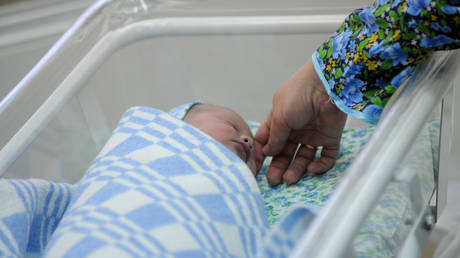 Researchers raise alarm over Russian demographics – media
Researchers raise alarm over Russian demographics – media
Karen Guzzo, a demographer at the University of North Carolina at Chapel Hill, has pointed to research that shows young Americans are delaying family formation for financial reasons. Among the factors Americans have cited for waiting or not having children at all are economic strain, work instability, political polarization, student loans, healthcare cost and accessibility, climate change and global conflicts, Guzzo told the Wall Street Journal.
US birth rates rose slightly right before the 2008 financial crisis, but have declined by 11% overall since 2000. Guzzo has pointed to “unstable work hours” and lack of paid leave in the “gig economy” that has arisen since the Great Recession.
Demographers such as Guzzo have argued that Americans need paid family leave and other benefits to promote the standard of living for young families. US surveys have persistently shown frustration with the “skyrocketing” cost of healthcare and childcare as well.
Birth rates in many wealthy nations with arguably better social support have been declining as well, however, which demographers have commonly attributed to “uncertainty” and “economic instability.” Meanwhile, the countries with the highest birth rates in the world in 2023 were all in sub-Saharan Africa: Niger (6.73), Angola (5.76) and the Democratic Republic of the Congo (5.56).
-
Site: RT - News
Americans are having far fewer babies for a large number of reasons
Women in the US are having children at the lowest rate since record-keeping began, the National Center for Health Statistics has revealed. Only 3.59 million births were recorded in the country in 2023, the lowest since the 3.4 million figure recorded in 1979, a report by the NCHS has noted. The US population was 225 million at the time, compared to almost 335 million now.
The general fertility rate fell 3% from the year before to 54.4 births per 1,000 women of childbearing age (defined as 15–44). The total fertility rate was just 1.61, down 2% from 2022. The US birth rate has been below the replacement level of 2.1 since 2007.
Unplanned pregnancies – mostly among teenagers – have fallen by 2% from the previous year, representing a 68% decline from 2007 levels. Birth rates for the 20-24 age bracket have dropped by almost 50% since 2007 as well. The only demographic that saw an increase in birth rates was Hispanic women, with a modest 1% gain from 2022.
The NCHS is a unit of the Centers for Disease Control and Prevention (CDC). It relies on birth certificates to provide a snapshot of US population trends and does not look at the underlying factors, said Brady Hamilton, the lead author of the report.
Read more Researchers raise alarm over Russian demographics – media
Researchers raise alarm over Russian demographics – media
Karen Guzzo, a demographer at the University of North Carolina at Chapel Hill, has pointed to research that shows young Americans are delaying family formation for financial reasons. Among the factors Americans have cited for waiting or not having children at all are economic strain, work instability, political polarization, student loans, healthcare cost and accessibility, climate change and global conflicts, Guzzo told the Wall Street Journal.
US birth rates rose slightly right before the 2008 financial crisis, but have declined by 11% overall since 2000. Guzzo has pointed to “unstable work hours” and lack of paid leave in the “gig economy” that has arisen since the Great Recession.
Demographers such as Guzzo have argued that Americans need paid family leave and other benefits to promote the standard of living for young families. US surveys have persistently shown frustration with the “skyrocketing” cost of healthcare and childcare as well.
Birth rates in many wealthy nations with arguably better social support have been declining as well, however, which demographers have commonly attributed to “uncertainty” and “economic instability.” Meanwhile, the countries with the highest birth rates in the world in 2023 were all in sub-Saharan Africa: Niger (6.73), Angola (5.76) and the Democratic Republic of the Congo (5.56).
-
Site: Zero HedgeGold Prices: Beyond Inflation And Real YieldsTyler Durden Thu, 04/25/2024 - 12:25
Authored Robert Burrows via BondVigilantes.com,
Renowned for its role as a hedge against economic uncertainty and inflation, gold has long captivated investors. One key factor influencing gold’s price is the relationship between real yields and inflation. Over the long term, gold has protected one against the pernicious effects of inflation and remains a powerful diversifier within an investment portfolio:
Source: M&G, Bloomberg, 23 April 2024
Real yields, also known as inflation-adjusted yields, represent the return on an investment after accounting for inflation. They are calculated by subtracting the inflation rate from the nominal yield of a financial instrument, such as a government bond. Real yields provide a more accurate measure of an investor’s purchasing power and the true return on their investment. Historically, gold prices have exhibited an inverse correlation with real yields. When real yields are low or negative, indicating that inflation-adjusted returns on fixed-income investments are meagre or eroded by inflation, investors seek alternative stores of value, such as gold. Conversely, when real yields are high, offering attractive returns relative to inflation, the opportunity cost of holding gold increases, leading to downward pressure on the gold price.
The below chart demonstrates this general trend:
Source: M&G, Bloomberg, 23 April 2024
While the trend is not perfect, the following chart demonstrates that correlations have been negative for the bulk of the time:
Source: M&G, Bloomberg, 23 April 2024
So why is gold going up? If these correlations hold and real yields are moving higher, the gold price should be trending lower. There is something else at play. Investors will generally point to global instability, with geopolitical concerns being obvious. The other would be the challenging fiscal backdrop of many major economies, which I have written about. These concerns are well founded; however, they do not seem to be showing up in other risk assets.
BBB US corporates are trading at their all-time tights, so there is nothing to see here:
Source: M&G, Bloomberg, 23 April 2024
Volatility is not exploding, as shown by the volatility index VIX:
Source: M&G, Bloomberg, 23 April 2024
A quick look at China shows some interesting developments. We know why interest rates have gone up: to combat inflation. However, yields may still be pressured higher due to countries selling down their treasury reserves. China, for example, has been reducing its treasury reserves for some years. This is not the sole reason for higher yields but will be a contributory factor. The below chart shows Chinese treasury reserves falling plotted against the 10-year treasury yield (inverted):
Source: M&G, Bloomberg, 23 April 2024
Where are these funds going? Bolstering gold reserves it would seem...
Source: M&G, Bloomberg, 23 April 2024
..., and China is not alone in this thinking:
Source: M&G, Bloomberg, 23 April 2024
We have witnessed many responses with the onset of the war in Ukraine, one of which is sanctions. The sanctions have attempted to lock out a country from its reserves. The West’s freezing of Russia’s gold and forex reserves in response to the conflict appears to have triggered this shift. More recently, there have been threats to confiscate Russian reserves and use these funds to support Ukraine’s efforts. This will undoubtedly make other countries somewhat nervous, especially those not 100% aligned with the West’s worldview.
Clearly, the Gold price is influenced by a multitude of factors, and one cannot point to any one single issue. However, it doesn’t seem as though gold is currently being bought for its safe-haven appeal at this stage. Where would the gold price be if the Fed starts cutting and the geopolitics worsen?
-
Site: Zero HedgeGold Prices: Beyond Inflation And Real YieldsTyler Durden Thu, 04/25/2024 - 12:25
Authored Robert Burrows via BondVigilantes.com,
Renowned for its role as a hedge against economic uncertainty and inflation, gold has long captivated investors. One key factor influencing gold’s price is the relationship between real yields and inflation. Over the long term, gold has protected one against the pernicious effects of inflation and remains a powerful diversifier within an investment portfolio:
Source: M&G, Bloomberg, 23 April 2024
Real yields, also known as inflation-adjusted yields, represent the return on an investment after accounting for inflation. They are calculated by subtracting the inflation rate from the nominal yield of a financial instrument, such as a government bond. Real yields provide a more accurate measure of an investor’s purchasing power and the true return on their investment. Historically, gold prices have exhibited an inverse correlation with real yields. When real yields are low or negative, indicating that inflation-adjusted returns on fixed-income investments are meagre or eroded by inflation, investors seek alternative stores of value, such as gold. Conversely, when real yields are high, offering attractive returns relative to inflation, the opportunity cost of holding gold increases, leading to downward pressure on the gold price.
The below chart demonstrates this general trend:
Source: M&G, Bloomberg, 23 April 2024
While the trend is not perfect, the following chart demonstrates that correlations have been negative for the bulk of the time:
Source: M&G, Bloomberg, 23 April 2024
So why is gold going up? If these correlations hold and real yields are moving higher, the gold price should be trending lower. There is something else at play. Investors will generally point to global instability, with geopolitical concerns being obvious. The other would be the challenging fiscal backdrop of many major economies, which I have written about. These concerns are well founded; however, they do not seem to be showing up in other risk assets.
BBB US corporates are trading at their all-time tights, so there is nothing to see here:
Source: M&G, Bloomberg, 23 April 2024
Volatility is not exploding, as shown by the volatility index VIX:
Source: M&G, Bloomberg, 23 April 2024
A quick look at China shows some interesting developments. We know why interest rates have gone up: to combat inflation. However, yields may still be pressured higher due to countries selling down their treasury reserves. China, for example, has been reducing its treasury reserves for some years. This is not the sole reason for higher yields but will be a contributory factor. The below chart shows Chinese treasury reserves falling plotted against the 10-year treasury yield (inverted):
Source: M&G, Bloomberg, 23 April 2024
Where are these funds going? Bolstering gold reserves it would seem...
Source: M&G, Bloomberg, 23 April 2024
..., and China is not alone in this thinking:
Source: M&G, Bloomberg, 23 April 2024
We have witnessed many responses with the onset of the war in Ukraine, one of which is sanctions. The sanctions have attempted to lock out a country from its reserves. The West’s freezing of Russia’s gold and forex reserves in response to the conflict appears to have triggered this shift. More recently, there have been threats to confiscate Russian reserves and use these funds to support Ukraine’s efforts. This will undoubtedly make other countries somewhat nervous, especially those not 100% aligned with the West’s worldview.
Clearly, the Gold price is influenced by a multitude of factors, and one cannot point to any one single issue. However, it doesn’t seem as though gold is currently being bought for its safe-haven appeal at this stage. Where would the gold price be if the Fed starts cutting and the geopolitics worsen?
-
Site: Zero HedgeThe Infamous 'Buy Bitcoin' Pad Just Sold For More Than $1 Million At AuctionTyler Durden Thu, 04/25/2024 - 12:05
$1.027 million...or about 16 bitcoin.
That's what the infamous 'Buy Bitcoin' scribble drawing on a yellow legal pad, once held up at a televised Congressional testimony behind Federal Reserve Chair Janet Yellen, just sold for at auction, according to Bloomberg.
The report notes that the sign quickly became iconic in the crypto community, symbolizing the industry's revival. Bitcoin's price soared from about $2,300 to a peak of nearly $74,000 in March, boosted by major financial firms like Fidelity and BlackRock.
As retail interest came around, early Bitcoin memorabilia like the pad regained popularity. NFTs...well, not so much.
An anonymous buyer secured the item with a bid of 16 Bitcoin on the auction site Scare City, the report notes, although a temporary glitch suggested a mistaken bid of $6.4 million before correction.
Give them a break. After all, not everyone is on the bitcoin to USD conversion standard just yet...
But if the price of the pad is any indicator, interest in the crypto remains hot.
“The page with the sign drawing was removed from the notepad shortly after the hearing. It has since been reattached with clear archival wire,” the item's description read at the auction.
Christian Langalis, a 22-year-old intern at the Cato Institute, created the sign during a 2017 House Financial Service Committee hearing featuring Janet Yellen. After being televised, Langalis was escorted out. The auctioned item, described as "Ink Drawing on Legal Pad," also includes his notes from the session.
-
Site: Zero HedgeThe Infamous 'Buy Bitcoin' Pad Just Sold For More Than $1 Million At AuctionTyler Durden Thu, 04/25/2024 - 12:05
$1.027 million...or about 16 bitcoin.
That's what the infamous 'Buy Bitcoin' scribble drawing on a yellow legal pad, once held up at a televised Congressional testimony behind Federal Reserve Chair Janet Yellen, just sold for at auction, according to Bloomberg.
The report notes that the sign quickly became iconic in the crypto community, symbolizing the industry's revival. Bitcoin's price soared from about $2,300 to a peak of nearly $74,000 in March, boosted by major financial firms like Fidelity and BlackRock.
As retail interest came around, early Bitcoin memorabilia like the pad regained popularity. NFTs...well, not so much.
An anonymous buyer secured the item with a bid of 16 Bitcoin on the auction site Scare City, the report notes, although a temporary glitch suggested a mistaken bid of $6.4 million before correction.
Give them a break. After all, not everyone is on the bitcoin to USD conversion standard just yet...
But if the price of the pad is any indicator, interest in the crypto remains hot.
“The page with the sign drawing was removed from the notepad shortly after the hearing. It has since been reattached with clear archival wire,” the item's description read at the auction.
Christian Langalis, a 22-year-old intern at the Cato Institute, created the sign during a 2017 House Financial Service Committee hearing featuring Janet Yellen. After being televised, Langalis was escorted out. The auctioned item, described as "Ink Drawing on Legal Pad," also includes his notes from the session.
-
Site: Zero HedgeThe Infamous 'Buy Bitcoin' Pad Just Sold For More Than $1 Million At AuctionTyler Durden Thu, 04/25/2024 - 12:05
$1.027 million...or about 16 bitcoin.
That's what the infamous 'Buy Bitcoin' scribble drawing on a yellow legal pad, once held up at a televised Congressional testimony behind Federal Reserve Chair Janet Yellen, just sold for at auction, according to Bloomberg.
The report notes that the sign quickly became iconic in the crypto community, symbolizing the industry's revival. Bitcoin's price soared from about $2,300 to a peak of nearly $74,000 in March, boosted by major financial firms like Fidelity and BlackRock.
As retail interest came around, early Bitcoin memorabilia like the pad regained popularity. NFTs...well, not so much.
An anonymous buyer secured the item with a bid of 16 Bitcoin on the auction site Scare City, the report notes, although a temporary glitch suggested a mistaken bid of $6.4 million before correction.
Give them a break. After all, not everyone is on the bitcoin to USD conversion standard just yet...
But if the price of the pad is any indicator, interest in the crypto remains hot.
“The page with the sign drawing was removed from the notepad shortly after the hearing. It has since been reattached with clear archival wire,” the item's description read at the auction.
Christian Langalis, a 22-year-old intern at the Cato Institute, created the sign during a 2017 House Financial Service Committee hearing featuring Janet Yellen. After being televised, Langalis was escorted out. The auctioned item, described as "Ink Drawing on Legal Pad," also includes his notes from the session.
-
Site: Zero HedgeThe Infamous 'Buy Bitcoin' Pad Just Sold For More Than $1 Million At AuctionTyler Durden Thu, 04/25/2024 - 12:05
$1.027 million...or about 16 bitcoin.
That's what the infamous 'Buy Bitcoin' scribble drawing on a yellow legal pad, once held up at a televised Congressional testimony behind Federal Reserve Chair Janet Yellen, just sold for at auction, according to Bloomberg.
The report notes that the sign quickly became iconic in the crypto community, symbolizing the industry's revival. Bitcoin's price soared from about $2,300 to a peak of nearly $74,000 in March, boosted by major financial firms like Fidelity and BlackRock.
As retail interest came around, early Bitcoin memorabilia like the pad regained popularity. NFTs...well, not so much.
An anonymous buyer secured the item with a bid of 16 Bitcoin on the auction site Scare City, the report notes, although a temporary glitch suggested a mistaken bid of $6.4 million before correction.
Give them a break. After all, not everyone is on the bitcoin to USD conversion standard just yet...
But if the price of the pad is any indicator, interest in the crypto remains hot.
“The page with the sign drawing was removed from the notepad shortly after the hearing. It has since been reattached with clear archival wire,” the item's description read at the auction.
Christian Langalis, a 22-year-old intern at the Cato Institute, created the sign during a 2017 House Financial Service Committee hearing featuring Janet Yellen. After being televised, Langalis was escorted out. The auctioned item, described as "Ink Drawing on Legal Pad," also includes his notes from the session.
-
Site: LifeNews
Kansas Democrat Gov Laura Kelly claims she’s pro-choice on abortion, but she just vetoed a bill to help women with the choice of adoption instead of abortion.
Kelly line-item vetoed the proposed “Pregnancy Compassion Awareness Program,” which would renew allocation of $2 million in grant funding to provide and enhance resources for women who want to make the choice to parent or place their child for adoption. The line-item veto confirms that Kelly specifically targeted the program for elimination.
That makes it clear Governor Kelly isn’t just pro-choice, she is certifiably pro-abortion.
“Four times this legislative session, Gov. Coercion Kelly has proved her abortion extremism,” said Jeanne Gawdun, Kansans for Life Director of Government Relations, in an email to LifeNews.
“First, she vetoed protections for women who are coerced into abortions and shot down transparency in state statistics reporting; then she blocked financial relief to families hoping to adopt. Now she wants to remove resources for women facing unexpected pregnancies. It’s clear the only ‘choice’ the Kelly/Toland Administration supports is abortion.”
Kansans for Life urges legislators to stand with Kansas women and families by overriding Gov. Kelly’s extreme, out-of-touch, veto.
As LifeNews.com reported last week, Kelly’s abortion extremism was on full display as she vetoed life-affirming tax policies in House Bill 2465. That’s legislation that, had she signed it, would have promoted adoption in Kansas. The Democrat governor used her veto pen to block existing resources giving financial relief to families longing to adopt children and support to organizations that assist moms who want to choose life for their babies.
HB 2465 would establish adoption savings accounts and increase tax credits for adoptive families, eliminate the sales tax burden for pregnancy resource centers, and create tax credits for donors to those organizations.
Instead, Governor Kelly made it more financially difficult for families to provide loving homes for adoptive children.
ACTION ALERT: Contact Governor Laura Kelly to complain.

The post Kansas Gov Laura Kelly Vetoes Bill to Help Pregnant Women Choose Adoption appeared first on LifeNews.com.
-
Site: RT - News
The values system dominating the West has “brought chaos,” the Hungarian prime minister believes
Western liberal hegemony has failed and must be destroyed, Hungarian Prime Minister Viktor Orban stated on Thursday, suggesting it could end as soon as this year.
Addressing the Conservative Political Action Conference (CPAC Hungary) in Budapest, Orban criticized the existing “world order based on progressive liberal hegemony,” saying it has spawned numerous figureheads who are “not fit to be leaders,” with even “beauty pageants” knowing more about peace then they do.
He accused liberal politicians of building “hegemonic ideological control to which everyone must submit” instead of actual governing, while turning “state bodies into tools of oppression.” Such forces are a dangerous enemy whose time is coming to an end, Orban claimed.
“The progressive liberals sense the danger, the end of this era also means their end,” the prime minister argued. Their dominance could be overcome as soon as this year, Orban predicted, citing the upcoming EU Parliament and US presidential elections.
“The proponents of the old world are sitting in Brussels, and although it is not my business to interfere in American politics, I fear that they are also sitting in Washington. This is what we are doing this year. This year, we will try to drive them out,” the Hungarian prime minister said.
This year, God willing, we can end the inglorious era of the Western civilization. We can end the world order built on progressive liberal hegemony. The progressive liberal world spirit has failed. It gave the world war, chaos, unrest and destroyed economies.
The emerging world order will be based on true sovereignty, with countries driven by their actual national interests rather than a global ideology, according to Orban.
READ MORE: EU leadership must go – member state’s PM
“Let the era of sovereignty come, let’s get back towards peace and security. Let’s make America great again, let’s make Europe great again,” he concluded.
-
Site: RT - News
The values system dominating the West has “brought chaos,” the Hungarian prime minister believes
Western liberal hegemony has failed and must be destroyed, Hungarian Prime Minister Viktor Orban stated on Thursday, suggesting it could end as soon as this year.
Addressing the Conservative Political Action Conference (CPAC Hungary) in Budapest, Orban criticized the existing “world order based on progressive liberal hegemony,” saying it has spawned numerous figureheads who are “not fit to be leaders,” with even “beauty pageants” knowing more about peace then they do.
He accused liberal politicians of building “hegemonic ideological control to which everyone must submit” instead of actual governing, while turning “state bodies into tools of oppression.” Such forces are a dangerous enemy whose time is coming to an end, Orban claimed.
“The progressive liberals sense the danger, the end of this era also means their end,” the prime minister argued. Their dominance could be overcome as soon as this year, Orban predicted, citing the upcoming EU Parliament and US presidential elections.
“The proponents of the old world are sitting in Brussels, and although it is not my business to interfere in American politics, I fear that they are also sitting in Washington. This is what we are doing this year. This year, we will try to drive them out,” the Hungarian prime minister said.
This year, God willing, we can end the inglorious era of the Western civilization. We can end the world order built on progressive liberal hegemony. The progressive liberal world spirit has failed. It gave the world war, chaos, unrest and destroyed economies.
The emerging world order will be based on true sovereignty, with countries driven by their actual national interests rather than a global ideology, according to Orban.
READ MORE: EU leadership must go – member state’s PM
“Let the era of sovereignty come, let’s get back towards peace and security. Let’s make America great again, let’s make Europe great again,” he concluded.
-
Site: RT - News
The values system dominating the West has “brought chaos,” the Hungarian prime minister believes
Western liberal hegemony has failed and must be destroyed, Hungarian Prime Minister Viktor Orban stated on Thursday, suggesting it could end as soon as this year.
Addressing the Conservative Political Action Conference (CPAC Hungary) in Budapest, Orban criticized the existing “world order based on progressive liberal hegemony,” saying it has spawned numerous figureheads who are “not fit to be leaders,” with even “beauty pageants” knowing more about peace then they do.
He accused liberal politicians of building “hegemonic ideological control to which everyone must submit” instead of actual governing, while turning “state bodies into tools of oppression.” Such forces are a dangerous enemy whose time is coming to an end, Orban claimed.
“The progressive liberals sense the danger, the end of this era also means their end,” the prime minister argued. Their dominance could be overcome as soon as this year, Orban predicted, citing the upcoming EU Parliament and US presidential elections.
“The proponents of the old world are sitting in Brussels, and although it is not my business to interfere in American politics, I fear that they are also sitting in Washington. This is what we are doing this year. This year, we will try to drive them out,” the Hungarian prime minister said.
This year, God willing, we can end the inglorious era of the Western civilization. We can end the world order built on progressive liberal hegemony. The progressive liberal world spirit has failed. It gave the world war, chaos, unrest and destroyed economies.
The emerging world order will be based on true sovereignty, with countries driven by their actual national interests rather than a global ideology, according to Orban.
READ MORE: EU leadership must go – member state’s PM
“Let the era of sovereignty come, let’s get back towards peace and security. Let’s make America great again, let’s make Europe great again,” he concluded.
-
Site: Zero HedgeStagflation Shock: GDP Stuns With Lowest Print In 2 Years, Below Lowest Estimates, As PCE Comes In Red HotTyler Durden Thu, 04/25/2024 - 11:51
If the Biden admin was to have any hopes of the Fed cutting rates and monetary easing ahead of the election, the tires would need to start falling off the US economy right... about... now... Which is why we didn't find it at all surprising that moments ago the Biden Bureau of Economic Analysis reported that in Q1, US GDP unexpectedly collapsed to just 1.6%, down more than 50% from the Q4 print of 3.4%, the lowest print since Q2 2022 when the US underwent a brief technical recession (one which the NBER never admitted of course), and a huge miss to the 2.5% estimate.
Almost as if on purpose, the GDP printed below the lowest estimate (that of SMBC Nikko) which was at 1.7% (the highest forecast was 3.1% from Goldman Sachs which was off by the usual 50%), and was a 3-sigma miss to the median estimate of 2.5%.
But while a collapse in the US economy is just what the "soft landers" wanted, the huge GDP miss was just half the story because at the same time, the BEA reported that the GDP Deflator (price index) came in at 3.1%, hotter than the 3.0% expected and almost double the 1.6% in Q4. Worse, the all important core PCE for Q1 soared from 2.0% to 3.7%, blowing away estimates of 3.4% (we will get a more accurate core PCE print tomorrow for the month of March) and suggesting that the US is about to not only not pass go, and overshoot soft-landing island completely, but crash-land straight into a stagflationary recession...
... unless the Fed does something, although what it can do - with inflation rising and growth slowing - is anyone's guess.
Taking a closer look at the absolute data, the BEA said that the increase in the first quarter primarily reflected increases in consumer spending and housing investment that were partly offset by a decrease in inventory investment. Imports, which are a subtraction in the calculation of GDP, increased.
- The increase in consumer spending reflected an increase in services that was partly offset by a decrease in goods. Within services, the leading contributors to the increase were health care as well as financial services and insurance. Within goods, the leading contributors to the decrease were motor vehicles and parts as well as gasoline and other energy goods.
- The increase in housing investment was led by brokers’ commissions and other ownership transfer costs as well as new single-family housing construction.
- The decrease in inventory investment was led by decreases in wholesale trade and manufacturing.
Compared to Q4, the deceleration in GDP in Q1 reflected decelerations in consumer spending, exports, and state and local government spending and a downturn in federal government spending. These movements were partly offset by an acceleration in housing investment. Imports accelerated.
Digger deeper into the data, we find that it was once again the slowdown in consumption that was the biggest culprit, with Personal Consumption rising 2.5%, a big drop from the 3.3% in Q4 and below the 3.0% expected. Taking a step back we find that consumption has now missed on 6 of the past 10 prints.
As discussed extensively here, while the consumption missed, it was still positive, and reflects the latest drop in the savings rate, to 3.6% in the first quarter from 4% in the fourth quarter of last year, as consumers continue to drain their bank accounts and max out their credit cards. Economists have been wondering how long that can go on, but so far it shows no signs of abating. The (until recently) relentless rise in equity prices may be playing a role here.
In terms of actual components we find the following picture:
- Personal Consumption added 1.68% to the bottom line GDP print, or more than 100% of it. This was down notably from 2.20% in Q4.
- Fixed Investment rose modestly, to 0.91% of the bottom line contribution, up from 0.61% in Q4.
- The Change in Private inventories continued to detract from GDP for the 2nd quarter in a row, reducing the bottom line GDP print by 0.35%, a modest improvement from the -0.47% in Q4.
- Net trade was a big delta, and after contributing 0.25% to the Q4 3.4% GDP print, in Q1 it subtracted 0.86% from the actual print.
- Finally, government continues to be a contribution but in Q1 it added just 0.21%, a big drop from the 0.79% in Q4 and the lowest since Q2 2022 when it reduced GDP by 0.29%.
And visually:
That was the GDP side of things, what about the inflation/PCE? Well, this is where things get really bad, because after PCE came in hot in Q4, it came in even hotter in Q4, as GDP prices, the prices of goods and services purchased by U.S. residents, increased 3.1% in Q1 after increasing 1.9%, and above the 3.0% estimate. Excluding food and energy, prices increased 3.2% after increasing 2.1%.
Turning to the all important PCE, Personal consumption expenditures prices increased 3.4% in the first quarter after increasing 1.8% in the fourth quarter. And the punchline: excluding food and energy, the all important core PCE price index increased 3.7% after increasing 2.0%, and coming far hotter than the 3.4% estimate; in fact it came in above the highest estimate!
This, according to Fed-whisperer Nick Timiraos, implies that the March core PCE number which is reported tomorrow, must be higher than +0.22, closer to +0.3% (which is precisely where the estimate is), and would imply upside revisions to Jan and Feb.
Commenting on the report, Fitch economist Olu Sonola writes that "the hot inflation print is the real story in this report. If growth continues to slowly decelerate, but inflation strongly takes off again in the wrong direction, the expectation of a Fed interest rate cut in 2024 is starting to look increasingly more out of reach."
The bottom line: while a sharp slowdown in growth would have been just the "bad news is good news" the market was desperately hoping for, throw in the unexpected surge in prices and suddenly the threat of a full-blown stagflationary shock is once again front and center... at least until tomorrow, when we wouldn't put it past this admin to come out with another fabricated core PCE print which makes no sense and somehow comes in well below the 0.3% MoM estimate.
-
Site: Zero HedgeStagflation Shock: GDP Stuns With Lowest Print In 2 Years, Below Lowest Estimates, As PCE Comes In Red HotTyler Durden Thu, 04/25/2024 - 11:51
If the Biden admin was to have any hopes of the Fed cutting rates and monetary easing ahead of the election, the tires would need to start falling off the US economy right... about... now... Which is why we didn't find it at all surprising that moments ago the Biden Bureau of Economic Analysis reported that in Q1, US GDP unexpectedly collapsed to just 1.6%, down more than 50% from the Q4 print of 3.4%, the lowest print since Q2 2022 when the US underwent a brief technical recession (one which the NBER never admitted of course), and a huge miss to the 2.5% estimate.
Almost as if on purpose, the GDP printed below the lowest estimate (that of SMBC Nikko) which was at 1.7% (the highest forecast was 3.1% from Goldman Sachs which was off by the usual 50%), and was a 3-sigma miss to the median estimate of 2.5%.
But while a collapse in the US economy is just what the "soft landers" wanted, the huge GDP miss was just half the story because at the same time, the BEA reported that the GDP Deflator (price index) came in at 3.1%, hotter than the 3.0% expected and almost double the 1.6% in Q4. Worse, the all important core PCE for Q1 soared from 2.0% to 3.7%, blowing away estimates of 3.4% (we will get a more accurate core PCE print tomorrow for the month of March) and suggesting that the US is about to not only not pass go, and overshoot soft-landing island completely, but crash-land straight into a stagflationary recession...
... unless the Fed does something, although what it can do - with inflation rising and growth slowing - is anyone's guess.
Taking a closer look at the absolute data, the BEA said that the increase in the first quarter primarily reflected increases in consumer spending and housing investment that were partly offset by a decrease in inventory investment. Imports, which are a subtraction in the calculation of GDP, increased.
- The increase in consumer spending reflected an increase in services that was partly offset by a decrease in goods. Within services, the leading contributors to the increase were health care as well as financial services and insurance. Within goods, the leading contributors to the decrease were motor vehicles and parts as well as gasoline and other energy goods.
- The increase in housing investment was led by brokers’ commissions and other ownership transfer costs as well as new single-family housing construction.
- The decrease in inventory investment was led by decreases in wholesale trade and manufacturing.
Compared to Q4, the deceleration in GDP in Q1 reflected decelerations in consumer spending, exports, and state and local government spending and a downturn in federal government spending. These movements were partly offset by an acceleration in housing investment. Imports accelerated.
Digger deeper into the data, we find that it was once again the slowdown in consumption that was the biggest culprit, with Personal Consumption rising 2.5%, a big drop from the 3.3% in Q4 and below the 3.0% expected. Taking a step back we find that consumption has now missed on 6 of the past 10 prints.
As discussed extensively here, while the consumption missed, it was still positive, and reflects the latest drop in the savings rate, to 3.6% in the first quarter from 4% in the fourth quarter of last year, as consumers continue to drain their bank accounts and max out their credit cards. Economists have been wondering how long that can go on, but so far it shows no signs of abating. The (until recently) relentless rise in equity prices may be playing a role here.
In terms of actual components we find the following picture:
- Personal Consumption added 1.68% to the bottom line GDP print, or more than 100% of it. This was down notably from 2.20% in Q4.
- Fixed Investment rose modestly, to 0.91% of the bottom line contribution, up from 0.61% in Q4.
- The Change in Private inventories continued to detract from GDP for the 2nd quarter in a row, reducing the bottom line GDP print by 0.35%, a modest improvement from the -0.47% in Q4.
- Net trade was a big delta, and after contributing 0.25% to the Q4 3.4% GDP print, in Q1 it subtracted 0.86% from the actual print.
- Finally, government continues to be a contribution but in Q1 it added just 0.21%, a big drop from the 0.79% in Q4 and the lowest since Q2 2022 when it reduced GDP by 0.29%.
And visually:
That was the GDP side of things, what about the inflation/PCE? Well, this is where things get really bad, because after PCE came in hot in Q4, it came in even hotter in Q4, as GDP prices, the prices of goods and services purchased by U.S. residents, increased 3.1% in Q1 after increasing 1.9%, and above the 3.0% estimate. Excluding food and energy, prices increased 3.2% after increasing 2.1%.
Turning to the all important PCE, Personal consumption expenditures prices increased 3.4% in the first quarter after increasing 1.8% in the fourth quarter. And the punchline: excluding food and energy, the all important core PCE price index increased 3.7% after increasing 2.0%, and coming far hotter than the 3.4% estimate; in fact it came in above the highest estimate!
This, according to Fed-whisperer Nick Timiraos, implies that the March core PCE number which is reported tomorrow, must be higher than +0.22, closer to +0.3% (which is precisely where the estimate is), and would imply upside revisions to Jan and Feb.
Commenting on the report, Fitch economist Olu Sonola writes that "the hot inflation print is the real story in this report. If growth continues to slowly decelerate, but inflation strongly takes off again in the wrong direction, the expectation of a Fed interest rate cut in 2024 is starting to look increasingly more out of reach."
The bottom line: while a sharp slowdown in growth would have been just the "bad news is good news" the market was desperately hoping for, throw in the unexpected surge in prices and suddenly the threat of a full-blown stagflationary shock is once again front and center... at least until tomorrow, when we wouldn't put it past this admin to come out with another fabricated core PCE print which makes no sense and somehow comes in well below the 0.3% MoM estimate.
-
Site: RT - News
Beijing has accused Washington of undermining peace and stability in the Asia-Pacific region
Beijing has condemned Washington’s deployment of intermediate-range missiles in the Asia-Pacific region and will take all effective measures to prevent the US from “messing up” the South China Sea, Chinese Defense Ministry spokesman Wu Qian said on Thursday.
His comments come after the US kicked off its largest joint exercise with the Philippines since the Cold War in the South China Sea earlier this week. The exercise, dubbed Balikatan, is set to run through May 10 and is said to involve over 11,000 US soldiers and 5,000 Philippine servicemen. A French frigate as well as troops from France and Australia are also participating in the event.
Earlier this month, the US also held a separate two-week round of exercises with the Philippines dubbed Salaknib 2024, during which it deployed SM-6 missiles capable of reaching Taiwan. The weapon has a maximum range of more than 400km while a new medium-range MRC Typhon land missile system is capable of launching from the Philippines island of Luzon.
Asked to comment on the move, Wu stated that Beijing “firmly opposes” the deployment of such weapons by the US in the Asia-Pacific and stressed that such an action by Washington “severely threatens the security of regional countries and undermines regional peace and stability. China will take resolute countermeasures.”
“We hope the relevant country could refrain from opening the door to the devil, which will only end up hurting everyone, including itself,” the spokesman said.
Wu stated that China sees the strengthening diplomatic relations between the US and the Philippines as the two countries’ business. However, he stressed that such relations must not harm China’s, or any other country’s interests, and must not undermine peace and stability in the region.
Read more Russia responds to new US missile deployment in Asia
Russia responds to new US missile deployment in Asia
China's military will continue to pay close attention to the situation in the region and will take “all effective measures to respond effectively and will never allow relevant parties to mess up the South China Sea,” Wu added.
Russia’s ambassador to the US Anatoly Antonov said earlier that the Pentagon’s deployment of medium-range missiles in the Philippines would constitute a “dark day” for international security and accused Washington of deliberately escalating military confrontation, fueling hotbeds of tension and creating closed groups and military-political alliances in the region.
“[The US] is trying to return the world to the worst times of the Cold War and teetering on the edge of a nuclear conflict,” Antonov said earlier this month, urging Washington not to open this “Pandora’s box.”
-
Site: RT - News
Beijing has accused Washington of undermining peace and stability in the Asia-Pacific region
Beijing has condemned Washington’s deployment of intermediate-range missiles in the Asia-Pacific region and will take all effective measures to prevent the US from “messing up” the South China Sea, Chinese Defense Ministry spokesman Wu Qian said on Thursday.
His comments come after the US kicked off its largest joint exercise with the Philippines since the Cold War in the South China Sea earlier this week. The exercise, dubbed Balikatan, is set to run through May 10 and is said to involve over 11,000 US soldiers and 5,000 Philippine servicemen. A French frigate as well as troops from France and Australia are also participating in the event.
Earlier this month, the US also held a separate two-week round of exercises with the Philippines dubbed Salaknib 2024, during which it deployed SM-6 missiles capable of reaching Taiwan. The weapon has a maximum range of more than 400km while a new medium-range MRC Typhon land missile system is capable of launching from the Philippines island of Luzon.
Asked to comment on the move, Wu stated that Beijing “firmly opposes” the deployment of such weapons by the US in the Asia-Pacific and stressed that such an action by Washington “severely threatens the security of regional countries and undermines regional peace and stability. China will take resolute countermeasures.”
“We hope the relevant country could refrain from opening the door to the devil, which will only end up hurting everyone, including itself,” the spokesman said.
Wu stated that China sees the strengthening diplomatic relations between the US and the Philippines as the two countries’ business. However, he stressed that such relations must not harm China’s, or any other country’s interests, and must not undermine peace and stability in the region.
Read more Russia responds to new US missile deployment in Asia
Russia responds to new US missile deployment in Asia
China's military will continue to pay close attention to the situation in the region and will take “all effective measures to respond effectively and will never allow relevant parties to mess up the South China Sea,” Wu added.
Russia’s ambassador to the US Anatoly Antonov said earlier that the Pentagon’s deployment of medium-range missiles in the Philippines would constitute a “dark day” for international security and accused Washington of deliberately escalating military confrontation, fueling hotbeds of tension and creating closed groups and military-political alliances in the region.
“[The US] is trying to return the world to the worst times of the Cold War and teetering on the edge of a nuclear conflict,” Antonov said earlier this month, urging Washington not to open this “Pandora’s box.”
-
Site: Zero HedgeIs Dune A Replica Of Our Real WorldTyler Durden Thu, 04/25/2024 - 11:45
By Michael Every of Rabobank
The Golden Path
USD/JPY is at 155, a fresh 34-year high, with the Yen slumping 10.2% year-to-date and suggestion that intervention may not come until we get to 160, a level last seen in 1986. USD/CAD is off recent lows at 1.37 but under pressure (as noted by Christian Lawrence): some suggest the Loonie could fall as far as 2 (so CAD/USD at 0.5) a decade from now. So, a higher US dollar. Which FX dominoes haven’t fallen yet, and when might they?
Australian CPI data suggest it will be hard to cut rates in 2024, as the median Sydney house price moves up to A$1.6m with them at 4.35%. Mexican CPI surprised to the upside, also suggesting further rate cuts may not roll out as had been priced in. Bank Indonesia shocked markets with a 25bp rate hike to 6.25% to try to relieve downwards pressure on IDR. So, what looks like higher rates for longer than had been expected. What breaks where, and when?
Geopolitical tensions will also be higher for longer. Europe made a dawn raid on a Chinese firm as Politico says: ‘EU to China: Open your public markets or we’ll close ours’. US Secretary of State Blinken is in Beijing against headlines warning of US sanctions on Chinese banks for helping Russia. President Biden signed the TikTok divest-or-ban bill, which Bloomberg warns will see China target US firms in kind. US military aid is already flowing to Taiwan, Ukraine, and Israel: the US is planning to convert old Pacific oil platforms to military bases; Ukraine was striking Russian energy targets even before it got access to new, longer-range US missiles; and Israel is closer to moving against Hamas in Rafah and Hezbollah in Lebanon, if not Iran (for now). The New Statesman echoes warnings made here since the mid-2010s: ‘The age of danger: order is breaking down as the great powers take sides in multiple wars’.
Economic policy also continues to get more populist: although it has no chance of happening, President Biden has proposed a 44.6% capital gains tax, the highest in US history, and a 25% tax on unrealized gains by high net-worth individuals. More realistic, perhaps, France’s opposition has proposed financing the country’s green transition with entirely with QE.
Let’s be frank, it’s hard to see a ‘Golden Path’ for markets ahead. It’s even harder to see ‘The Golden Path’ - a global economic system that allows maximum market/personal freedoms, yet with minimal inequality both domestically and internationally, and so socioeconomic and geopolitical stability. Yet absent that Path, we end up Hamiltonianism or mercantilism, economic war, real war, and a Great-Power-struggle ‘age of danger’.
Bloomberg just made reference to this (‘Geostrategy Industrial Complex Is a Win-Win’) vis-à-vis the real economy, noting corporate and foreign policy elites are talking more to each other, “which is good for both sides”. Yet financial markets continue to ignore foreign policy elites! Where are the macro forecasts adjusted for a world of Great Power struggles? Most still look remarkably similar to ones without that backdrop. (By contrast, note our ‘geopolitical’ work on Europe’s growth and inflation.) Where are the FX, rates, equity, credit, commodity, and property scenarios for a world of Great Power struggles? Again, most still look remarkably similar to ones without that backdrop – correct me if I am wrong, but it seems only our Fed watcher Philip Marey is predicting Trump tariffs would be a roadblock to ongoing Fed cuts in 2025.
Let’s be Frank Herbert.
Bloomberg also praises Hollywood’s ‘Dune 2’ for predicting the future better than Fukuyama for its old-and-new high-tech, feuding Great Houses struggling for control of the Spice without which the economy can’t function, as religion sweeps people to violent jihad. That comparison is true, but there is a deeper parallel to our present situation. Those who have read the Dune series repeatedly know all that backdrop supports two central overarching themes:
-
First: “Don’t follow charismatic leaders.” Paul Atreides is no hero: he is directly responsible for the deaths of 61 billion people.
-
Second: “The Golden Path.” Paul doesn’t have the stomach to follow through on what he needs to do for mankind, but his son, Leto II, does. **SPOILER ALERT** He fuses himself with a sandworm to become a dictator for 3,500 years, destroying Spice, space travel, and the economy, to teach people “a lesson they will remember in their bones”: that once they can break free of his reign, which he eventually allows, they should become as diverse and far-flung as possible to never allow anyone or anything to threaten them in their entirety again.
The conflict between humanity's stated desire for peace and their actual need for volatility is the central message of the Dune series.
We built a centralised neoliberal global system that repressed volatility as QE Spice flowed. But while Great Houses thrived, and some got very rich selling shadow-bank Spice derivatives, that system only increased, not decreased, our fundamental vulnerabilities to key threats. Returning to a world of Great Power struggles may ironically create healthier economic systems and societies over time, in some respects.
True, that likely won’t allow such free markets. But while we need some volatility to get stronger --think of Taleb’s anti-fragility-- we don’t need other kinds, like a sandworm swallowing us whole (or the financial market equivalent as past vol-repression has to be unwound), or people launching jihads at home or abroad. Which there is rather too much of right now.
So, Trump fusing with a sandworm may teach us all a geopolitical lesson “in our bones”: does his orange skin reflect excess McMelange consumption even if his eyes aren’t blue-in-blue?
Back to markets: the God Emperor of Dune, Leto II, maintains a complete monopoly on melange, the real currency in the universe; but apart from that, the books don’t say much about rates or FX. I’m just not sure what the Golden Level of rates is on our Golden Path. Then again, neither do central banks. And financial markets mostly have their heads deep in the sand.
-
-
Site: Zero HedgeIs Dune A Replica Of Our Real WorldTyler Durden Thu, 04/25/2024 - 11:45
By Michael Every of Rabobank
The Golden Path
USD/JPY is at 155, a fresh 34-year high, with the Yen slumping 10.2% year-to-date and suggestion that intervention may not come until we get to 160, a level last seen in 1986. USD/CAD is off recent lows at 1.37 but under pressure (as noted by Christian Lawrence): some suggest the Loonie could fall as far as 2 (so CAD/USD at 0.5) a decade from now. So, a higher US dollar. Which FX dominoes haven’t fallen yet, and when might they?
Australian CPI data suggest it will be hard to cut rates in 2024, as the median Sydney house price moves up to A$1.6m with them at 4.35%. Mexican CPI surprised to the upside, also suggesting further rate cuts may not roll out as had been priced in. Bank Indonesia shocked markets with a 25bp rate hike to 6.25% to try to relieve downwards pressure on IDR. So, what looks like higher rates for longer than had been expected. What breaks where, and when?
Geopolitical tensions will also be higher for longer. Europe made a dawn raid on a Chinese firm as Politico says: ‘EU to China: Open your public markets or we’ll close ours’. US Secretary of State Blinken is in Beijing against headlines warning of US sanctions on Chinese banks for helping Russia. President Biden signed the TikTok divest-or-ban bill, which Bloomberg warns will see China target US firms in kind. US military aid is already flowing to Taiwan, Ukraine, and Israel: the US is planning to convert old Pacific oil platforms to military bases; Ukraine was striking Russian energy targets even before it got access to new, longer-range US missiles; and Israel is closer to moving against Hamas in Rafah and Hezbollah in Lebanon, if not Iran (for now). The New Statesman echoes warnings made here since the mid-2010s: ‘The age of danger: order is breaking down as the great powers take sides in multiple wars’.
Economic policy also continues to get more populist: although it has no chance of happening, President Biden has proposed a 44.6% capital gains tax, the highest in US history, and a 25% tax on unrealized gains by high net-worth individuals. More realistic, perhaps, France’s opposition has proposed financing the country’s green transition with entirely with QE.
Let’s be frank, it’s hard to see a ‘Golden Path’ for markets ahead. It’s even harder to see ‘The Golden Path’ - a global economic system that allows maximum market/personal freedoms, yet with minimal inequality both domestically and internationally, and so socioeconomic and geopolitical stability. Yet absent that Path, we end up Hamiltonianism or mercantilism, economic war, real war, and a Great-Power-struggle ‘age of danger’.
Bloomberg just made reference to this (‘Geostrategy Industrial Complex Is a Win-Win’) vis-à-vis the real economy, noting corporate and foreign policy elites are talking more to each other, “which is good for both sides”. Yet financial markets continue to ignore foreign policy elites! Where are the macro forecasts adjusted for a world of Great Power struggles? Most still look remarkably similar to ones without that backdrop. (By contrast, note our ‘geopolitical’ work on Europe’s growth and inflation.) Where are the FX, rates, equity, credit, commodity, and property scenarios for a world of Great Power struggles? Again, most still look remarkably similar to ones without that backdrop – correct me if I am wrong, but it seems only our Fed watcher Philip Marey is predicting Trump tariffs would be a roadblock to ongoing Fed cuts in 2025.
Let’s be Frank Herbert.
Bloomberg also praises Hollywood’s ‘Dune 2’ for predicting the future better than Fukuyama for its old-and-new high-tech, feuding Great Houses struggling for control of the Spice without which the economy can’t function, as religion sweeps people to violent jihad. That comparison is true, but there is a deeper parallel to our present situation. Those who have read the Dune series repeatedly know all that backdrop supports two central overarching themes:
-
First: “Don’t follow charismatic leaders.” Paul Atreides is no hero: he is directly responsible for the deaths of 61 billion people.
-
Second: “The Golden Path.” Paul doesn’t have the stomach to follow through on what he needs to do for mankind, but his son, Leto II, does. **SPOILER ALERT** He fuses himself with a sandworm to become a dictator for 3,500 years, destroying Spice, space travel, and the economy, to teach people “a lesson they will remember in their bones”: that once they can break free of his reign, which he eventually allows, they should become as diverse and far-flung as possible to never allow anyone or anything to threaten them in their entirety again.
The conflict between humanity's stated desire for peace and their actual need for volatility is the central message of the Dune series.
We built a centralised neoliberal global system that repressed volatility as QE Spice flowed. But while Great Houses thrived, and some got very rich selling shadow-bank Spice derivatives, that system only increased, not decreased, our fundamental vulnerabilities to key threats. Returning to a world of Great Power struggles may ironically create healthier economic systems and societies over time, in some respects.
True, that likely won’t allow such free markets. But while we need some volatility to get stronger --think of Taleb’s anti-fragility-- we don’t need other kinds, like a sandworm swallowing us whole (or the financial market equivalent as past vol-repression has to be unwound), or people launching jihads at home or abroad. Which there is rather too much of right now.
So, Trump fusing with a sandworm may teach us all a geopolitical lesson “in our bones”: does his orange skin reflect excess McMelange consumption even if his eyes aren’t blue-in-blue?
Back to markets: the God Emperor of Dune, Leto II, maintains a complete monopoly on melange, the real currency in the universe; but apart from that, the books don’t say much about rates or FX. I’m just not sure what the Golden Level of rates is on our Golden Path. Then again, neither do central banks. And financial markets mostly have their heads deep in the sand.
-
-
Site: Euthanasia Prevention Coalition
Dear Senator
EPC-USA's Fact Sheet is testimony regarding the social harms attached to assisted suicide legislation like HB1283. However, given that assisted suicide’s negative impact is going to fall primarily on the disabled community, the EPC felt that we should submit a more detailed analysis of how assisted suicide undermines disability rights, and whose advice on this matter ought to be heeded by members of the Assembly.Members of the EPC board with training in the fields of disability studies and advocacy have noted that some assisted suicide advocates are trying to hijack disability rights for their own purposes. For instance, an able-bodied man named Christopher Riddle has done pro-assisted suicide advocacy in the Northeast while presenting himself as a “disability rights advocate.” Riddle is a colleague of Udo Schuklenk, one of the architects of Canada’s euthanasia program, and Riddle enthusiastically approves of that program.
Moreover, Riddle’s theories about disability rights have been reasonably criticized as lacking any empirical grounding in the experiences of disabled people. He has no experience or personal stake in the practical implications of his ideas.
Furthermore, Riddle’s scholarship dehumanizes disabled people who are harmed by assisted suicide; he frames anyone who might be harmed by assisted suicide as the equivalent of a car accident statistic. He asserts that harm that assisted suicide might cause for people with disabilities “ought not to be of special concern.” Hence, Riddle is willing to sacrifice people with disabilities for the right to die movement’s agenda; he is not the “disability rights advocate” he claims to be.For a more accurate understanding of how the disabled community has approached the issue of assisted suicide, we encourage you to watch a video created by disability studies ethicist Harold Braswell about disability rights opposition to assisted suicide. Braswell has studied the right to die issue extensively.
There are other very important facts that legislators must take into account when considering how assisted suicide is impacting the disabled community:
The American Association of Suicidology made a 2017 statement saying that “MAiD” was not suicide. But in 2023 the AAS had to retract that statement because it was used in the 2019 Truchon decision that expanded assisted suicide to disabled Canadians, which was opposed by the Canadian Association for Suicide Prevention.The consequences of the AAS’s statement are an example of how green lighting assisted suicide for the terminally ill easily results in violence against people with disabilities.
In 2021, the United Nations Special Rapporteur on the Rights of People with Disabilities asserted that all assisted suicide laws violate its Convention On The Rights of People with Disabilities.
Peer-reviewed research establishes that people are more likely to view suicide as acceptable if the victim is disabled, and people with disabilities often lack access to comprehensive suicide prevention care. This bill exacerbates that problem by laying the scaffolding for “MAiD” to become a substitute for the suicides of persons with disabilities.
Well-known right to die leader Thaddeus Mason Pope has tweeted that it’s good for disabled people to die by suicide; the director of Compassion and Choices appeared on Dr. Phil with Pope in 2023. If you pass this bill, you empower and reward a contingent of people who want disabled people’s suicides to be a “medical procedure.”
We urge you to allow HB1283 to die this session because regardless of its content, it rewards a movement that is hostile to people with disabilities. Exacerbating the oppression that disabled people already face so that the proponents can plan their deaths is unwise and unjust.Sincerely,
Meghan Schrader, Disability Rights EPC-USA
Josephine L.A. Glaser, MD.,FAAFP
Colleen E. Barry, Chairperson
Kenneth Stevens, MD
William Toffler, MD
Gordon Friesen
Alex Schadenberg
Epc_USA@yahoo.com
Endnotes- https://twitter.com/cariddlephd/status/1373071051631038470
- http://www.lpbr.net/2014/08/disability-and-justice-capabilities.html?m=1
- https://www.tandfonline.com/doi/full/10.1080/09687599.2014.984931
- https://philpapers.org/rec/RIDAD
- https://www.dropbox.com/scl/fi/vdpwdt26wwq42ak0eraee/Braswell_PAS-Statement_To-Send-1.mov?rlkey=05vve2sis2s4sy51hma27jx2u&dl=0
- https://www.slu.edu/arts-and-sciences/bioethics/faculty/braswell-harold.php
- https://suicidology.org/2023/03/08/aas-update-on-previous-statement/
- https://twitter.com/TrudoLemmens/status/1666067817035190272
- https://suicideprevention.ca/media/statement-on-recent-maid-developments/
- https://www.ohchr.org/en/press-releases/2021/01/disability-not-reason-sanction-medically-assisted-dying-un-experts
- https://pubmed.ncbi.nlm.nih.gov/26402344/
- https://www.youtube.com/watch?v=XXVrgtTNN2Y&t=2108s
- https://twitter.com/ThaddeusPope/status/1669450726831976449
-
Site: Mises Institute
-
Site: Zero HedgeIn First, 17 Nations Release Joint Statement Demanding Hamas Release All HostagesTyler Durden Thu, 04/25/2024 - 11:25
Hamas has rejected an urgent formal plea from world leaders to release all remaining Israeli hostages, with the designated terror group telling the West "you can't force us to do anything."
Earlier on Thursday the US was among a group of 17 countries which have citizens in Hamas custody that released a joint statement calling on Hamas to free them.
 Via Flash90
Via Flash90
This was the first such international joint statement of the conflict, which has run for more than half a year. Prior attempts at similar statements never got past the draft phase as countries had vastly differing perspectives of the Gaza crisis.
"We call for the immediate release of all hostages held by Hamas and Gaza now for over 200 days. They include our citizens," the statement said. "The fate of the hostages and the civilian population in Gaza who are protected under international law is of international concern."
The leaders from the following countries were behind the statement: United States, Argentina, Austria, Brazil, Bulgaria, Canada, Colombia, Denmark, France, Germany, Hungary, Poland, Portugal, Romania, Serbia, Spain, Thailand and the United Kingdom.
They push for both warring parties to see through the deal that's reportedly on the table: "Gazans would be able to return to their homes and their lands with preparations beforehand to ensure shelter and humanitarian provisions," it said.
"We will emphasize that the pending deal for the release of the hostages will lead to an immediate and prolonged ceasefire in Gaza, which will facilitate the introduction of necessary humanitarian aid to be provided throughout Gaza and lead to a reliable end to hostilities," the joint statement continued.
But Israeli officials have continued to lay blame on Hamas for their inability to reach a deal. One official privy to negotiation efforts described, "The core truth, there's a deal on the table. It meets nearly all of the demands that Hamas has had, including in key elements, one of which I just spoke with." The official added: "And what they need to do is release the vulnerable category of hostages to get things moving.'"
It reportedly focuses on an initial release of captive women, wounded, elderly, and the sick. Israel has recently acknowledged there's a high likelihood that dozens of hostages have already died.
According to a new Hamas articulation of its demands via Associated Press:
A top Hamas political official told The Associated Press the Islamic militant group is willing to agree to a truce of five years or more with Israel and that it would lay down its weapons and convert into a political party if an independent Palestinian state is established along pre-1967 borders.
The comments by Khalil al-Hayya in an interview Wednesday came amid a stalemate in months of talks for a cease-fire in Gaza. The suggestion that Hamas would disarm appeared to be a significant concession by the militant group officially committed to Israel’s destruction.
The Netanyahu government has already long rejected this as a possibility. Instead the prime minister has vowed to not stop military operations in the Gaza Strip until Hamas is eradicated.
NEW: Senior admin official says there’s a Gaza cease-fire deal on the table that meets nearly all of Hamas’ demands, but “it’s really down to one guy to accept the deal.”
— Elizabeth Hagedorn (@ElizHagedorn) April 25, 2024
"The answer that comes back from Sinwar personally is no."Additionally, there have already been high-level attempts at the UN Security Council to push through a resolution recognizing a Palestinian state, but the US has vetoed this. At this point in the conflict a full demand for a Palestinian state seems to be a non-starter from the perspectives of Tel Aviv and Washington.
-
Site: Zero HedgeIn First, 17 Nations Release Joint Statement Demanding Hamas Release All HostagesTyler Durden Thu, 04/25/2024 - 11:25
Hamas has rejected an urgent formal plea from world leaders to release all remaining Israeli hostages, with the designated terror group telling the West "you can't force us to do anything."
Earlier on Thursday the US was among a group of 17 countries which have citizens in Hamas custody that released a joint statement calling on Hamas to free them.
 Via Flash90
Via Flash90
This was the first such international joint statement of the conflict, which has run for more than half a year. Prior attempts at similar statements never got past the draft phase as countries had vastly differing perspectives of the Gaza crisis.
"We call for the immediate release of all hostages held by Hamas and Gaza now for over 200 days. They include our citizens," the statement said. "The fate of the hostages and the civilian population in Gaza who are protected under international law is of international concern."
The leaders from the following countries were behind the statement: United States, Argentina, Austria, Brazil, Bulgaria, Canada, Colombia, Denmark, France, Germany, Hungary, Poland, Portugal, Romania, Serbia, Spain, Thailand and the United Kingdom.
They push for both warring parties to see through the deal that's reportedly on the table: "Gazans would be able to return to their homes and their lands with preparations beforehand to ensure shelter and humanitarian provisions," it said.
"We will emphasize that the pending deal for the release of the hostages will lead to an immediate and prolonged ceasefire in Gaza, which will facilitate the introduction of necessary humanitarian aid to be provided throughout Gaza and lead to a reliable end to hostilities," the joint statement continued.
But Israeli officials have continued to lay blame on Hamas for their inability to reach a deal. One official privy to negotiation efforts described, "The core truth, there's a deal on the table. It meets nearly all of the demands that Hamas has had, including in key elements, one of which I just spoke with." The official added: "And what they need to do is release the vulnerable category of hostages to get things moving.'"
It reportedly focuses on an initial release of captive women, wounded, elderly, and the sick. Israel has recently acknowledged there's a high likelihood that dozens of hostages have already died.
According to a new Hamas articulation of its demands via Associated Press:
A top Hamas political official told The Associated Press the Islamic militant group is willing to agree to a truce of five years or more with Israel and that it would lay down its weapons and convert into a political party if an independent Palestinian state is established along pre-1967 borders.
The comments by Khalil al-Hayya in an interview Wednesday came amid a stalemate in months of talks for a cease-fire in Gaza. The suggestion that Hamas would disarm appeared to be a significant concession by the militant group officially committed to Israel’s destruction.
The Netanyahu government has already long rejected this as a possibility. Instead the prime minister has vowed to not stop military operations in the Gaza Strip until Hamas is eradicated.
NEW: Senior admin official says there’s a Gaza cease-fire deal on the table that meets nearly all of Hamas’ demands, but “it’s really down to one guy to accept the deal.”
— Elizabeth Hagedorn (@ElizHagedorn) April 25, 2024
"The answer that comes back from Sinwar personally is no."Additionally, there have already been high-level attempts at the UN Security Council to push through a resolution recognizing a Palestinian state, but the US has vetoed this. At this point in the conflict a full demand for a Palestinian state seems to be a non-starter from the perspectives of Tel Aviv and Washington.
-
Site: LifeNews
Ballot propositions that will either expand access to abortion or place legal abortion into state constitutions will be on the ballot in as many as twelve states this November. It is hardly a secret that, in the years following the Dobbs decision, pro-lifers have not fared well in statewide democracy campaigns.
However, this year, Florida pro-lifers have a good chance to prevail at the ballot box. That is because ballot propositions to amend Florida’s state constitution need more than 60 percent of the vote to take effect.
Two separate surveys show that the proposed amendment to place legal abortion in Florida’s state constitution is polling well below this 60 percent threshold. An Emerson College poll released earlier this month found that the abortion amendment has the support of only 42 percent of Sunshine State voters. Additionally, a recent USA Today/Ipsos poll found the abortion amendment was ten percentage points short of passage.
REACH PRO-LIFE PEOPLE WORLDWIDE! Advertise with LifeNews to reach hundreds of thousands of pro-life readers every week. Contact us today.
This is good news for pro-lifers. A body of polling data from both Ohio and Michigan show that amendments to place legal abortion in the state constitution fail to appreciably gain support during the course of the campaign. Obviously, Sunshine State pro-lifers still have plenty of work to do. Furthermore, both the presidential election and the enforcement of the Heartbeat Act may affect the dynamics of this direct-democracy campaign. However, these two polls show that a pro-life victory in Florida this November is within reach.
LifeNews Note: Michael J. New is an assistant professor at the Busch School of Business at The Catholic University of America and is an associate scholar at the Charlotte Lozier Institute. Follow him on Twitter @Michael_J_New

The post Two Polls Show Florida Amendment for Abortions Up to Birth Will Fail appeared first on LifeNews.com.
-
Site: RT - News
A top official for the militant group has said it will turn into a purely political party if Palestinians are given their own state
Hamas is willing to lay down arms if a two-state solution to the Israeli-Palestinian conflict is reached along pre-1967 borders, a top political official for the group, Khalil al-Hayya, has told AP. Hamas, whose stated goal is the destruction of Israel, had previously rejected such a possibility outright.
In an interview on Thursday, al-Hayya said Hamas wants to join the Palestine Liberation Organization (PLO) to form a unified government that would control Gaza and the West Bank.
Hamas would agree to “a fully sovereign Palestinian state in the West Bank and Gaza Strip and the return of Palestinian refugees in accordance with the international resolutions” along Israel’s pre-1967 borders, he claimed.
As a result of the Six-Day War between Israel and a coalition of Arab nations, the Jewish state occupied the West Bank, Gaza, Syria’s Golan Heights, and other areas.
If a two-state solution is reached, the military wing of Hamas will dissolve, the official, who represents the group in the now stalled ceasefire and prisoner exchange talks with Israel, insisted.
Read more Dozens arrested at pro-Palestine protests in US (VIDEO)
Dozens arrested at pro-Palestine protests in US (VIDEO)
“All the experiences of people who fought against occupiers, when they became independent and obtained their rights and their state, what have these forces done? They have turned into political parties and their defending fighting forces have turned into the national army,” al-Hayya explained.
According to AP, it is “unlikely” that Israel would consider such a scenario as Prime Minister Benjamin Netanyahu has vowed to keep fighting Hamas until its complete elimination, and has repeatedly spoken out against a sovereign Palestinian state.
In January, another senior Hamas official – Khaled Mashal – told Kuwaiti podcaster Amar Taki that “we have nothing to do with the two-state solution.” The group’s members “reject this notion, because it means you would get a promise for a [Palestinian] state, yet you are required to recognize the legitimacy of the other state, which is the Zionist entity,” he said.
Mashal insisted that the October 7 attack on Israel by Hamas, in which at least 1,200 people were killed and 250 taken hostage, was a sign that the Palestinians could retake all their lands. “I believe that the dream and the hope for Palestine from the river to the sea and from the north to the south has been renewed,” he said.
READ MORE: Netanyahu should resign – ex-US House speaker
The death toll from Israel’s airstrikes and ground offensive in Gaza, launched in response to the Hamas incursion, has surpassed 34,305, with 77,293 others wounded, according to the latest data from the Palestinian enclave’s health ministry.
-
Site: RT - News
A top official for the militant group has said it will turn into a purely political party if Palestinians are given their own state
Hamas is willing to lay down arms if a two-state solution to the Israeli-Palestinian conflict is reached along pre-1967 borders, a top political official for the group, Khalil al-Hayya, has told AP. Hamas, whose stated goal is the destruction of Israel, had previously rejected such a possibility outright.
In an interview on Thursday, al-Hayya said Hamas wants to join the Palestine Liberation Organization (PLO) to form a unified government that would control Gaza and the West Bank.
Hamas would agree to “a fully sovereign Palestinian state in the West Bank and Gaza Strip and the return of Palestinian refugees in accordance with the international resolutions” along Israel’s pre-1967 borders, he claimed.
As a result of the Six-Day War between Israel and a coalition of Arab nations, the Jewish state occupied the West Bank, Gaza, Syria’s Golan Heights, and other areas.
If a two-state solution is reached, the military wing of Hamas will dissolve, the official, who represents the group in the now stalled ceasefire and prisoner exchange talks with Israel, insisted.
Read more Dozens arrested at pro-Palestine protests in US (VIDEO)
Dozens arrested at pro-Palestine protests in US (VIDEO)
“All the experiences of people who fought against occupiers, when they became independent and obtained their rights and their state, what have these forces done? They have turned into political parties and their defending fighting forces have turned into the national army,” al-Hayya explained.
According to AP, it is “unlikely” that Israel would consider such a scenario as Prime Minister Benjamin Netanyahu has vowed to keep fighting Hamas until its complete elimination, and has repeatedly spoken out against a sovereign Palestinian state.
In January, another senior Hamas official – Khaled Mashal – told Kuwaiti podcaster Amar Taki that “we have nothing to do with the two-state solution.” The group’s members “reject this notion, because it means you would get a promise for a [Palestinian] state, yet you are required to recognize the legitimacy of the other state, which is the Zionist entity,” he said.
Mashal insisted that the October 7 attack on Israel by Hamas, in which at least 1,200 people were killed and 250 taken hostage, was a sign that the Palestinians could retake all their lands. “I believe that the dream and the hope for Palestine from the river to the sea and from the north to the south has been renewed,” he said.
READ MORE: Netanyahu should resign – ex-US House speaker
The death toll from Israel’s airstrikes and ground offensive in Gaza, launched in response to the Hamas incursion, has surpassed 34,305, with 77,293 others wounded, according to the latest data from the Palestinian enclave’s health ministry.
-
Site: RT - News
A top official for the militant group has said it will turn into a purely political party if Palestinians are given their own state
Hamas is willing to lay down arms if a two-state solution to the Israeli-Palestinian conflict is reached along pre-1967 borders, a top political official for the group, Khalil al-Hayya, has told AP. Hamas, whose stated goal is the destruction of Israel, had previously rejected such a possibility outright.
In an interview on Thursday, al-Hayya said Hamas wants to join the Palestine Liberation Organization (PLO) to form a unified government that would control Gaza and the West Bank.
Hamas would agree to “a fully sovereign Palestinian state in the West Bank and Gaza Strip and the return of Palestinian refugees in accordance with the international resolutions” along Israel’s pre-1967 borders, he claimed.
As a result of the Six-Day War between Israel and a coalition of Arab nations, the Jewish state occupied the West Bank, Gaza, Syria’s Golan Heights, and other areas.
If a two-state solution is reached, the military wing of Hamas will dissolve, the official, who represents the group in the now stalled ceasefire and prisoner exchange talks with Israel, insisted.
Read more Dozens arrested at pro-Palestine protests in US (VIDEO)
Dozens arrested at pro-Palestine protests in US (VIDEO)
“All the experiences of people who fought against occupiers, when they became independent and obtained their rights and their state, what have these forces done? They have turned into political parties and their defending fighting forces have turned into the national army,” al-Hayya explained.
According to AP, it is “unlikely” that Israel would consider such a scenario as Prime Minister Benjamin Netanyahu has vowed to keep fighting Hamas until its complete elimination, and has repeatedly spoken out against a sovereign Palestinian state.
In January, another senior Hamas official – Khaled Mashal – told Kuwaiti podcaster Amar Taki that “we have nothing to do with the two-state solution.” The group’s members “reject this notion, because it means you would get a promise for a [Palestinian] state, yet you are required to recognize the legitimacy of the other state, which is the Zionist entity,” he said.
Mashal insisted that the October 7 attack on Israel by Hamas, in which at least 1,200 people were killed and 250 taken hostage, was a sign that the Palestinians could retake all their lands. “I believe that the dream and the hope for Palestine from the river to the sea and from the north to the south has been renewed,” he said.
READ MORE: Netanyahu should resign – ex-US House speaker
The death toll from Israel’s airstrikes and ground offensive in Gaza, launched in response to the Hamas incursion, has surpassed 34,305, with 77,293 others wounded, according to the latest data from the Palestinian enclave’s health ministry.
-
Site: RT - News
A top official for the militant group has said it will turn into a purely political party if Palestinians are given their own state
Hamas is willing to lay down arms if a two-state solution to the Israeli-Palestinian conflict is reached along pre-1967 borders, a top political official for the group, Khalil al-Hayya, has told AP. Hamas, whose stated goal is the destruction of Israel, had previously rejected such a possibility outright.
In an interview on Thursday, al-Hayya said Hamas wants to join the Palestine Liberation Organization (PLO) to form a unified government that would control Gaza and the West Bank.
Hamas would agree to “a fully sovereign Palestinian state in the West Bank and Gaza Strip and the return of Palestinian refugees in accordance with the international resolutions” along Israel’s pre-1967 borders, he claimed.
As a result of the Six-Day War between Israel and a coalition of Arab nations, the Jewish state occupied the West Bank, Gaza, Syria’s Golan Heights, and other areas.
If a two-state solution is reached, the military wing of Hamas will dissolve, the official, who represents the group in the now stalled ceasefire and prisoner exchange talks with Israel, insisted.
Read more Dozens arrested at pro-Palestine protests in US (VIDEO)
Dozens arrested at pro-Palestine protests in US (VIDEO)
“All the experiences of people who fought against occupiers, when they became independent and obtained their rights and their state, what have these forces done? They have turned into political parties and their defending fighting forces have turned into the national army,” al-Hayya explained.
According to AP, it is “unlikely” that Israel would consider such a scenario as Prime Minister Benjamin Netanyahu has vowed to keep fighting Hamas until its complete elimination, and has repeatedly spoken out against a sovereign Palestinian state.
In January, another senior Hamas official – Khaled Mashal – told Kuwaiti podcaster Amar Taki that “we have nothing to do with the two-state solution.” The group’s members “reject this notion, because it means you would get a promise for a [Palestinian] state, yet you are required to recognize the legitimacy of the other state, which is the Zionist entity,” he said.
Mashal insisted that the October 7 attack on Israel by Hamas, in which at least 1,200 people were killed and 250 taken hostage, was a sign that the Palestinians could retake all their lands. “I believe that the dream and the hope for Palestine from the river to the sea and from the north to the south has been renewed,” he said.
READ MORE: Netanyahu should resign – ex-US House speaker
The death toll from Israel’s airstrikes and ground offensive in Gaza, launched in response to the Hamas incursion, has surpassed 34,305, with 77,293 others wounded, according to the latest data from the Palestinian enclave’s health ministry.
-
Site: Zero HedgeLargest Oil ETF Hit With Record Outflow On Subsiding Geopolitical Risk PremiumTyler Durden Thu, 04/25/2024 - 11:05
A reduced geopolitical risk premium for Brent crude this week is likely one of the main drivers resulting in the largest daily outflows for the US Oil Fund ETF. Tensions between Iran and Israel have subsided in recent days, and it's entirely possible the White House is busy mediating both sides to ensure a wider conflict doesn't rocket Brent prices above $100/bbl.
Bloomberg data shows that the US Oil Fund experienced the most massive daily outflow ever on Tuesday, with investors pulling a record $376 million, exceeding the outflow of $323 million set in 2009. Though as the chart below shows, there was a huge inflow just a day or two ago...
"The timing of this activity coincides with a general easing of immediate tension in the Middle East over the weekend," John Love, chief executive officer of USCF Investments, told Bloomberg. USCF Investments is the firm that manages USO.
What happened here? USO's total assets decoupled and negatively diverges from oil prices (a similar picture to what we have seen in gold as physical demand soars as paper demand ebbs).
Love said, "Given how high tensions were prior to the strike, it's likely this was an event-driven selloff."
Brent crude prices topped $91/bbl in early April and traded above the $90/bbl level through the mid-point of April as Iran and Israel volleyed missiles and bombs at each other in an unprecedented escalation between the two countries. However, the turmoil appeared more or less theatrics than anything else. Prices have since faded to the $87-$88/bbl level.
"Brent crude oil prices have retreated from their recent highs following a perceived de-escalation in the Israel-Iran conflict, and we continue to expect prices to remain range-bound over the coming months given current fundamentals," Goldman's Jenny Grimberg wrote in a note to clients on Wednesday.
Grimberg shifted up her Brent price floor to $75bbl from the previous line of $70/bbl to reflect OPEC's increasingly strong influence on the market, softening US supply, a more robust demand outlook, and ongoing geopolitical risks. She also adjusted her price forecasts for 2H24/2025 to $86-$82/bbl (from $85-$80/bbl).
"That said, we maintain our $90/bbl ceiling on prices, owing partly to ample OPEC+ spare capacity, which limits upside price risk," she added.
On Thursday, in a separate note, MUFG Bank's Ehsan Khoman outlined a "reduced geopolitical risk premium" impacting Brent prices but said, "a broader risk-off tone is being overshadowed by bullish US crude inventory numbers, with front-end Brent pricing consolidating below the USD90/b handle."
Khoman pointed out that oil bulls are sitting comfortably with prices over the 50-day moving average of $86/bbl.
He expects Brent to trade between the $80/bbl and $100/bbl range for the rest of the year primarily because of "effective OPEC+ market management" on the supply side, adding that the lingering risk remains geopolitics in the Middle East.
That said, the largest USO daily outflow ever is likely not an ominous sign of a major trend change in crude prices but rather just a cooling of the geopolitical risk premium. A combination of lingering threats in the Middle East and OPEC+ market management will keep prices elevated.
-
Site: Zero HedgeLargest Oil ETF Hit With Record Outflow On Subsiding Geopolitical Risk PremiumTyler Durden Thu, 04/25/2024 - 11:05
A reduced geopolitical risk premium for Brent crude this week is likely one of the main drivers resulting in the largest daily outflows for the US Oil Fund ETF. Tensions between Iran and Israel have subsided in recent days, and it's entirely possible the White House is busy mediating both sides to ensure a wider conflict doesn't rocket Brent prices above $100/bbl.
Bloomberg data shows that the US Oil Fund experienced the most massive daily outflow ever on Tuesday, with investors pulling a record $376 million, exceeding the outflow of $323 million set in 2009. Though as the chart below shows, there was a huge inflow just a day or two ago...
"The timing of this activity coincides with a general easing of immediate tension in the Middle East over the weekend," John Love, chief executive officer of USCF Investments, told Bloomberg. USCF Investments is the firm that manages USO.
What happened here? USO's total assets decoupled and negatively diverges from oil prices (a similar picture to what we have seen in gold as physical demand soars as paper demand ebbs).
Love said, "Given how high tensions were prior to the strike, it's likely this was an event-driven selloff."
Brent crude prices topped $91/bbl in early April and traded above the $90/bbl level through the mid-point of April as Iran and Israel volleyed missiles and bombs at each other in an unprecedented escalation between the two countries. However, the turmoil appeared more or less theatrics than anything else. Prices have since faded to the $87-$88/bbl level.
"Brent crude oil prices have retreated from their recent highs following a perceived de-escalation in the Israel-Iran conflict, and we continue to expect prices to remain range-bound over the coming months given current fundamentals," Goldman's Jenny Grimberg wrote in a note to clients on Wednesday.
Grimberg shifted up her Brent price floor to $75bbl from the previous line of $70/bbl to reflect OPEC's increasingly strong influence on the market, softening US supply, a more robust demand outlook, and ongoing geopolitical risks. She also adjusted her price forecasts for 2H24/2025 to $86-$82/bbl (from $85-$80/bbl).
"That said, we maintain our $90/bbl ceiling on prices, owing partly to ample OPEC+ spare capacity, which limits upside price risk," she added.
On Thursday, in a separate note, MUFG Bank's Ehsan Khoman outlined a "reduced geopolitical risk premium" impacting Brent prices but said, "a broader risk-off tone is being overshadowed by bullish US crude inventory numbers, with front-end Brent pricing consolidating below the USD90/b handle."
Khoman pointed out that oil bulls are sitting comfortably with prices over the 50-day moving average of $86/bbl.
He expects Brent to trade between the $80/bbl and $100/bbl range for the rest of the year primarily because of "effective OPEC+ market management" on the supply side, adding that the lingering risk remains geopolitics in the Middle East.
That said, the largest USO daily outflow ever is likely not an ominous sign of a major trend change in crude prices but rather just a cooling of the geopolitical risk premium. A combination of lingering threats in the Middle East and OPEC+ market management will keep prices elevated.
-
Site: Zero HedgeWatch: NYU 'Pro-Palestine' Demonstrators Have No Idea What They're ProtestingTyler Durden Thu, 04/25/2024 - 11:05
Authored by Steve Watson via Modernity.news,
Video captured at New York University shows that some of the students protesting there have no idea why.
NYU is one of several campuses where so called ‘Gaza camps’ have been formed with students refusing to disperse.
Yet it seems that the students don’t really know what they are doing it for.
In the footage below, the videographer asks one of the protesters “What would you say is the main goal with tonight’s protest.”
She responds “I think the goal is just showing our support for Palestine and demanding that NYU stops – I honestly don’t know all of what NYU is doing.”
The student then asks her friend “do you know what they are doing?” To which the other (masked) student responds “I wish I was more educated.”
“I’m not either,” the first protestor then admits, claiming that she came from Columbia University after she was told to.
Watch:
“I wish I was more educated.”
— m o d e r n i t y (@ModernityNews) April 25, 2024
Video captured at New York University shows that some of the students protesting there have no idea why. Full report: https://t.co/iYSbhaxxEf pic.twitter.com/iqXpoZexiPThe NYPD arrested more than 150 demonstrators Monday night as the protests turned violent with protesters throwing bottles and other projectiles at police.
WATCH: Chairs and bottles thrown as New York police clear out the NYU encampment, make arrests
— Daily Caller (@DailyCaller) April 23, 2024
pic.twitter.com/YGBsJyAULYNYU Spokesperson John Beckman stated “We witnessed disorderly, disruptive, and antagonizing behavior that has interfered with the safety and security of our community, and that demonstrated how quickly a demonstration can get out of control or people can get hurt.”
Similar scenes unfolded Wednesday at UT Austin:
Palestinian activists TACKLED to the floor and arrested as Texas DPS troops make dozens of arrests as an unruly mob surround the officers and scream.
— Oli London (@OliLondonTV) April 24, 2024
Hundreds of students have occupied the University of Texas- Austin and have been ordered to disperse.
Video: @RyanChandlerTV pic.twitter.com/lE3RIpgzEr* * *
Your support is crucial in helping us defeat mass censorship. Please consider donating via Locals or check out our unique merch. Follow us on X @ModernityNews.
-
Site: Zero HedgeWatch: NYU 'Pro-Palestine' Demonstrators Have No Idea What They're ProtestingTyler Durden Thu, 04/25/2024 - 11:05
Authored by Steve Watson via Modernity.news,
Video captured at New York University shows that some of the students protesting there have no idea why.
NYU is one of several campuses where so called ‘Gaza camps’ have been formed with students refusing to disperse.
Yet it seems that the students don’t really know what they are doing it for.
In the footage below, the videographer asks one of the protesters “What would you say is the main goal with tonight’s protest.”
She responds “I think the goal is just showing our support for Palestine and demanding that NYU stops – I honestly don’t know all of what NYU is doing.”
The student then asks her friend “do you know what they are doing?” To which the other (masked) student responds “I wish I was more educated.”
“I’m not either,” the first protestor then admits, claiming that she came from Columbia University after she was told to.
Watch:
“I wish I was more educated.”
— m o d e r n i t y (@ModernityNews) April 25, 2024
Video captured at New York University shows that some of the students protesting there have no idea why. Full report: https://t.co/iYSbhaxxEf pic.twitter.com/iqXpoZexiPThe NYPD arrested more than 150 demonstrators Monday night as the protests turned violent with protesters throwing bottles and other projectiles at police.
WATCH: Chairs and bottles thrown as New York police clear out the NYU encampment, make arrests
— Daily Caller (@DailyCaller) April 23, 2024
pic.twitter.com/YGBsJyAULYNYU Spokesperson John Beckman stated “We witnessed disorderly, disruptive, and antagonizing behavior that has interfered with the safety and security of our community, and that demonstrated how quickly a demonstration can get out of control or people can get hurt.”
Similar scenes unfolded Wednesday at UT Austin:
Palestinian activists TACKLED to the floor and arrested as Texas DPS troops make dozens of arrests as an unruly mob surround the officers and scream.
— Oli London (@OliLondonTV) April 24, 2024
Hundreds of students have occupied the University of Texas- Austin and have been ordered to disperse.
Video: @RyanChandlerTV pic.twitter.com/lE3RIpgzEr* * *
Your support is crucial in helping us defeat mass censorship. Please consider donating via Locals or check out our unique merch. Follow us on X @ModernityNews.
-
Site: Padre PeregrinoOn why the Son of God chose to die as a slave before rising from the dead, and why modern martyrs will follow in His footsteps on both. (Correction: I said St. Mark's feast is coming up, but it's today.)
-
Site: Zero HedgeRussia To Seize $440 Million From JPMorganTyler Durden Thu, 04/25/2024 - 10:45
Seizing assets? Two can play at that game...
Just days after Washington voted to authorize the REPO Act - paving the way for the Biden administration confiscate billions in Russian sovereign assets which sit in US banks - it appears Moscow has a plan of its own (let's call it the REVERSE REPO Act) as a Russian court has ordered the seizure of $440 million from JPMorgan.
The seizure order follows from Kremlin-run lender VTB launching legal action against the largest US bank to recoup money stuck under Washington’s sanctions regime.
As The FT reports, the order, published in the Russian court register on Wednesday, targets funds in JPMorgan’s accounts and shares in its Russian subsidiaries, according to the ruling issued by the arbitration court in St Petersburg.
The assets had been frozen by authorities in the wake of the western sanctions, and highlights some of the fallout western companies are feeling from the punitive measures against Moscow.
Specifically, The FT notes that the dispute centers on $439mn in funds that VTB held in a JPMorgan account in the US.
When Washington imposed sanctions on the Kremlin-run bank, JPMorgan had to move the funds to a separate escrow account. Under the US sanctions regime, neither VTB nor JPMorgan can access the funds.
In response, VTB last week filed a lawsuit against the New York-based group to get Russian authorities to freeze the equivalent amount in Russia, warning that JPMorgan was seeking to leave Russia and would refuse to pay any compensation.
The following day, JPMorgan filed its own lawsuit against the Russian lender in a US court to prevent a seizure of its assets, arguing that it had no way to reclaim VTB’s stranded US funds to compensate its own potential losses from the Russian lawsuit.
Yesterday's decision sided with VTB, ordering the seizure of funds in JPMorgan’s Russian accounts and “movable and immovable property,” including its stake of a Russian subsidiary.
JPMorgan said it faced "certain and irreparable harm" from VTB’s efforts, exposed to a nearly half-billion-dollar loss, for merely abiding by U.S. sanctions.
The order was the latest example of American banks getting caught between the demands of Western sanctions regimes and overseas interests. Last summer, a Russian court froze about $36mn worth of assets owned by Goldman following a lawsuit by state-owned bank Otkritie. A few months later the court ruled that the Wall Street investment bank had to pay the funds to Otkritie.
The tit-for-tat continues.
-
Site: Zero HedgeRussia To Seize $440 Million From JPMorganTyler Durden Thu, 04/25/2024 - 10:45
Seizing assets? Two can play at that game...
Just days after Washington voted to authorize the REPO Act - paving the way for the Biden administration confiscate billions in Russian sovereign assets which sit in US banks - it appears Moscow has a plan of its own (let's call it the REVERSE REPO Act) as a Russian court has ordered the seizure of $440 million from JPMorgan.
The seizure order follows from Kremlin-run lender VTB launching legal action against the largest US bank to recoup money stuck under Washington’s sanctions regime.
As The FT reports, the order, published in the Russian court register on Wednesday, targets funds in JPMorgan’s accounts and shares in its Russian subsidiaries, according to the ruling issued by the arbitration court in St Petersburg.
The assets had been frozen by authorities in the wake of the western sanctions, and highlights some of the fallout western companies are feeling from the punitive measures against Moscow.
Specifically, The FT notes that the dispute centers on $439mn in funds that VTB held in a JPMorgan account in the US.
When Washington imposed sanctions on the Kremlin-run bank, JPMorgan had to move the funds to a separate escrow account. Under the US sanctions regime, neither VTB nor JPMorgan can access the funds.
In response, VTB last week filed a lawsuit against the New York-based group to get Russian authorities to freeze the equivalent amount in Russia, warning that JPMorgan was seeking to leave Russia and would refuse to pay any compensation.
The following day, JPMorgan filed its own lawsuit against the Russian lender in a US court to prevent a seizure of its assets, arguing that it had no way to reclaim VTB’s stranded US funds to compensate its own potential losses from the Russian lawsuit.
Yesterday's decision sided with VTB, ordering the seizure of funds in JPMorgan’s Russian accounts and “movable and immovable property,” including its stake of a Russian subsidiary.
JPMorgan said it faced "certain and irreparable harm" from VTB’s efforts, exposed to a nearly half-billion-dollar loss, for merely abiding by U.S. sanctions.
The order was the latest example of American banks getting caught between the demands of Western sanctions regimes and overseas interests. Last summer, a Russian court froze about $36mn worth of assets owned by Goldman following a lawsuit by state-owned bank Otkritie. A few months later the court ruled that the Wall Street investment bank had to pay the funds to Otkritie.
The tit-for-tat continues.
-
Site: LifeNews
Joe Biden showed his bigoted side on April 23 when he spoke in Tampa, Florida about the glory of abortion. It wasn’t abortion, per se, that got him going—it was those whom he identified as pro-life that set him off.
To be specific, he railed against Donald Trump’s pro-life stance, saying the former president made “a political deal” with “the evangelical base of the Republican Party to look past his moral and character flaws.”
Fifty percent of all the money raised by the Democrats comes from Jews. Yet no one is going to say that Biden made a “political deal” with “the Jewish base of the Democratic Party to look past his cognitive flaws.”
Biden refuses to condemn the anti-Jewish rhetoric stemming from Muslims in Dearborn, Michigan. Yet no one is going to say that he made a “political deal” with “the Muslim base of the Democratic Party to look past his cognitive flaws.”
REACH PRO-LIFE PEOPLE WORLDWIDE! Advertise with LifeNews to reach hundreds of thousands of pro-life readers every week. Contact us today.
Notice that Biden’s comment in Tampa wasn’t about Protestants in general. He focused exclusively on evangelicals, and that is because to take a swipe at all Protestants would be to slam the mainline denominations; they are mostly in the pro-abortion camp. He chose a subset of Protestants who are known for their pro-life convictions.
Biden intentionally red-flagged evangelicals, knowing it would appeal to his bigoted base (survey data also show that Democrats do not think highly of Catholics, either). This was a classic example of religious baiting, and it should be condemned by everyone.
As the election year progresses, look for Biden to continue with this demagogic strategy. The “devout Catholic” has no problem manipulating religion to serve his militantly secular agenda.
LifeNews Note: Bill Donohue is the president of the Catholic League for Religious and Civil Rights.

The post Joe Biden Trashed Pro-Life Christians at Abortion Rally appeared first on LifeNews.com.
-
Site: Zero HedgeFalling Bond Yields Show It's Crunch Time In ChinaTyler Durden Thu, 04/25/2024 - 10:30
Authored by Simon Black, Bloomberg macro strategist,
Sovereign yields in China have been falling in recent months, in marked contrast to almost every other major country. This is a key macro variable to watch for signs China is ready to ease policy more comprehensively as its tolerance is tested for an economy that is becoming increasingly deflationary. Further, vigilance should be increased for a yuan devaluation. Though not a base case, the tail-risk of one occurring is rising.
Year of the Dragon in China it may be, but the economy has yet to exhibit the abundance of energy and enthusiasm those born under the symbol are supposed to possess. China failed to exit the pandemic with the resurgence in growth seen in many other countries, and the outlook has been lackluster ever since.
But we are entering the crunch phase, where China needs to respond forcefully, or face the prospect of a protracted debt-deflation. The signal is coming from falling government yields. They have been steadily falling all year, at a faster pace than any other major EM or DM country. Indeed yields have been rising in almost every other country.
That’s a problem for the yuan. The drop in China’s yields is adding pressure on the currency. Widening real-yield differentials show that there remains a strong pull higher on the dollar-yuan pair.
The question is: will this prompt a devaluation in the yuan? The short answer is less likely than not, but it can’t be discounted, and the risks are rising as long as capital outflows continue to climb.
We can’t measure those directly in China as the capital account is nominally closed. But we can proxy for them by looking at the trade surplus, official reserves held at the PBOC, and foreign currency held in bank deposits. The trade surplus is a capital inflow, and whatever portion of it that does not end up either at the PBOC or in foreign-currency bank accounts we can infer is capital outflow.
This measure is rising again, as more capital typically tries to leave the country when growth is sub-par, as it is today.
So far, China appears to be managing the decline in the yuan versus the dollar. USD/CNY has been bumping up against the 2% upper band above the official fix for the pair. But China is stabilizing the yuan’s descent through the state-banking sector. As Brad Setser noted in a recent blog, the PBOC has stated that it has more or less exited from the FX market. Instead, that intervention now takes place unofficially using dollar deposits held at state banks.
China has plenty of foreign-currency reserves to stave off continued yuan weakness (more so than is readily visible, according to Setser), but there is always the possibility policymakers decide to ameliorate the destructive impact on domestic liquidity from capital outflow by allowing a larger, one-time devaluation. There is speculation this is where China is headed, and that it is behind its recent stockpiling of gold, copper and other commodities.
However, there are risks attached to such a move, given it might be detrimental to the more normalized markets that China covets in the name of financial stability, as well potentially prompting a tariff response from the US.
A devaluation is a low, but non-zero, possibility that has risen this year. Either way, the drop in bond yields underscores that China will soon need to do something more dramatic to avert the risk of a debt deflation.
In the past, the current rate of decline in sovereign yields has led to a forthright easing response from China, with a rise in real M1 growth typically seen over the next six-to-nine months.
But M1 growth in China has singularly failed to bounce back so far despite several hints that it was about to. This is likely a deliberate policy choice as rises in narrow money are reflective of broad-based “flood-like” stimulus that policymakers in China have explicitly ruled out as recently as January, in comments from Premier Li Qiang. Policymakers are laser-focused on not re-inflating the shadow-finance sector, which continues to be squeezed.
Shadow finance led to unwanted speculative froth in markets, real estate and investment that China does not want to see reprised. But its curbs have been too successful. Credit remains hard-to-get where it is needed most, typically the non state-owned sectors.
The slowdown this fostered was amplified by China’s response to the pandemic. Rather than supporting household demand, policymakers in China supported the export sector, leading to a surge in outward-bound goods.
Stringent lockdowns prompted households to become exceptionally risk averse, increasing their savings, and being reluctant to spend even after restrictions were lifted, lest the government decided to paralyze the economy again at some future time.
This also caused the real estate sector to implode, prompting multiple piecemeal easing measures to support housing prices and indebted property developers, to little avail so far: leading indicators for real estate such as floor-space started remain muted or weak, while the USD-denominated debt of property companies continues to trade at less than 25 cents in the dollar.
China has a large and growing debt pile that is only set to get worse as its demographics continue to deteriorate. The alarming chart below from the IMF projects public debt (including local government financing vehicles) in China to accelerate way ahead of that in the US in the coming years, to around 150% of GDP by the end of the decade. Total non-financial debt is already closing in on 300% of GDP.
Source: IMF
This raises the risk of a debt-deflation, when the value of assets and the income from them fall in relation to the value of liabilities. Debt becomes increasingly difficult to service and pay back, leading to lower consumption and investment, entrenched deflation and derisory growth that is difficult to escape.
Woody Allen once quipped that mankind is at a crossroads, one road leads to despair and utter hopelessness and the other to total extinction. China’s choices are not yet that stark, but the longer it waits to deliver an emphatic response to its predicament, they may soon become that way.
-
Site: The Orthosphere
I once read an essay lamenting the disappearance of what I recall the essayist calling, “negroes in white shirts and bow ties.” The essayist was one of those late-onset conservatives we call “liberals mugged by reality.” The “negroes in white shirts and bow ties” were the polite, often Christian, white-acting blacks who had won the late-onset conservative’s sympathy when the Civil Rights Movement was young.
What the late-onset conservative did not understand was that the success of the Civil Rights Movement entailed the disappearance of “negroes in white shirts and bow ties.” Obviously, “white shirts and bow ties” here simply signify acting white. That is what respectable white men were wearing around 1960, and because whites were hegemonic in 1960, respectable blacks wore them too.
The wardrobe of lower middle-class American males changed very markedly by the late 1960s, so there were very few blacks outside the Nation of Islam wearing white shirts and bow ties; but the disappearance of “negroes in white shirts and bow ties” was caused by something deeper than the sartorial revolution of the late 1960s.
The success of the Civil Rights Movement meant that blacks were now free to act black. The key word that I just used is hegemony. To this I must add the companion word toady. A hegemon has the power to impose his vision on the world, the toady yields to that power and conforms to that vision.
What we can learn from the lament of the “mugged-by-reality” liberal (a.k.a the “late-onset conservative”) is that hegemons can fail to see their own power. When they survey a throng that dresses and acts like down-market versions of themselves, the hegemon does not see toadies. At least not always. He sees “negros in white shirts and bow ties,” who’s unlikeness to him goes no deeper than to the color of their skins.
But the point of a liberation movement like the Civil Rights Movement is not to allow toadies to go on dressing and acting like their former masters. It is to liberate the toadies from hegemony and allow them to act like themselves.
We see this in the liberation movements we call the Women’s Rights Movement and the Gay Rights Movement, both of which quickly went places that shocked some of their early supporters. Thus the “feminine businesswomen” and “confirmed bachelors” quickly went the way of “negroes in white shirts and bow ties.” They did not all become power-skirts, leather-boys, and black panthers, but enough did to make many former hegemons into “late-onset conservatives.”
The hegemony of straight white Christian males has been, of course, entirely destroyed. This is why the teaching toadies of today’s actual hegemons do little but rail against it. We must never forget that Cassandra was effectively mute, while the appointed oracles of the regime always shriek with contagious alarm at newfangled phantoms and ghosts of rivals long dead.
We must also never forget what I will call the Hegemon’s Illusion, which is to believe he is loved when he is in fact only feared. I do not suppose that straight white Christian males will be in a position to fall under the Hegemon’s Illusion any time soon, but as toadies we may possibly use it to our advantage.
-
Site: LifeNews
Alliance Defending Freedom attorneys representing a Young Americans for Freedom chapter and three students at the University at Buffalo will be available for media interviews Friday following oral arguments in federal district court. ADF attorneys are challenging university officials and the Student Association after they derecognized the conservative student group and barred it from receiving the same benefits as other student groups because it is a chapter of a national organization, Young America’s Foundation.
ADF attorneys filed a federal lawsuit against the school in June, and a month later, the Student Association rescinded its policy and recognized YAF, but it replaced the policy with another unconstitutional one that requires student organizations and their leaders to give up their legal rights in order for the clubs to be officially recognized. Now, because Young Americans for Freedom rightly won’t sign a form waiving its legal rights, the Student Association has blocked the student group from accessing more than $6,000 in student-fee funding in its account, using authority given it by university officials. ADF attorneys filed a motion in March asking the court to allow the student group to access funds while the case proceeds.
“All students, regardless of their political affiliations, should have access to generally available resources, and universities are constitutionally bound to protect these rights,” said ADF Legal Counsel Logan Spena, who will be arguing before the court on behalf of YAF and the students. “Unfortunately, the University at Buffalo and its student government are picking and choosing winners and losers in the marketplace of ideas, first by punishing the group for its national affiliation with a conservative group, then by demanding that group leaders sign away their freedoms. Public universities cannot force student organizations to become an extension of the university or student government. We are urging the court to stand up for the First Amendment rights of all students, not just some.”
REACH PRO-LIFE PEOPLE WORLDWIDE! Advertise with LifeNews to reach hundreds of thousands of pro-life readers every week. Contact us today.
The university’s new policy requires that club leaders certify that they surrender their, and their organization’s, right to file a lawsuit against the university or its officials in the future, exist as a legal entity under state law, have financial accounts as an organization, and enter into agreements with other individuals or organizations. As a result, ADF attorneys amended their lawsuit in University at Buffalo Young Americans for Freedom v. University at Buffalo Student Association after the school rescinded the original policy barring the group from official recognition.
Young Americans for Freedom has existed as a registered student organization on the UB campus since 2017, and for the last two years, the student group has had more than 100 members and has held weekly meetings on campus. As a chapter of Young America’s Foundation, UB Young Americans for Freedom’s purpose is to provide an environment for the students of UB to learn about U.S. history, the U.S. Constitution, individual freedom, a strong national defense, free enterprise, and other topics. Like other clubs, Young Americans for Freedom fulfills its mission by engaging in expressive activities on campus, including posting flyers and signs, hosting tables with information, inviting speakers to campus, and talking with fellow students.
Denis Kitchen, one of more than 4,500 attorneys in the ADF Attorney Network, is serving as local counsel on behalf of Young Americans for Freedom and the students.

The post Conservative Student Group Sues University of Buffalo for Cancelling Club, Blocking Financial Account appeared first on LifeNews.com.
-
Site: Zero HedgeWall Street Reacts To Today's Stagflationary Data DumpTyler Durden Thu, 04/25/2024 - 10:07
After today's stagflationary GDP print, which came below the lowest Wall Street estimate even as core PCE came in above the highest estimate...
... there has been an outcry of horror from Wall Street's traders, analysts and strategists as the BEA once again steamrolled all over Wall Street's benevolent forecasts for a soft, or no, landing and crash-landed right into stagflation nation.
Below we excerpt from some of the most notable kneejerk responses and comments:
Ian Lyngen at BMO Capital Markets, on the potential implication of the core PCE inflation gauge this morning on tomorrow’s monthly release:
“The question has quickly become whether this is due to revisions from Jan/Feb or if tomorrow’s monthly core-PCE report will reveal a stronger-than-consensus (+0.3%) print.”
Ira Jersey, Bloomberg Intel chief Rates strategist
“The rate market is keenly focused on the PCE deflator beating expectations in 1Q. We still target 4.70% as a key technical level for 10-year Treasury yield. A break of that targets the cycle highs around 5%.”
“It looks like the fiscal drag on the economy may have begun with federal government consumption actually a drag on GDP this quarter. Not huge, but any negative print is still a shift from the past few years. But 2.5% consumption growth still isn’t anywhere near recession, and services consumption growing at 4% suggests a more pronounced slowdown could be a long way off.”
Sebastian Boyd, Bloomberg analyst
Bond traders can read the GDP data in two ways. The growth number was a big miss, but prices rose faster than expected. Of course this is the first pass at the data, but if it holds up then it shows the US economy is considerably weaker than thought, which would open the way to earlier interest rate cuts. On the other hand, the Fed is more likely to focus on inflation than growth, and the price index, especially the core price index, doesn’t offer any comfort on that front. Two-year yields initially fell, but are now much higher on the day. Stock futures are down; the dollar is spiking. Keep an eye on the yen.
Lindsay Rosner, head of multisector fixed income investing at GSAM
"The report has a disappointing headline and consumption line item, but at this point, inflation concerns weigh more than GDP softness for the Fed.”
Quincy Krosby, Chief Global Strategist at LPL Financial:
“The softer first read of Q1 GDP could shift -- again- the Fed’s timetable for initiating the rate easing cycle, with July coming back into play. If the PCE report due tomorrow similarly suggests the downward path of inflation has begun to once again momentum, it could serve as a catalyst for the market.”
Dan Suzuki, deputy CIO at Richard Bernstein Advisors,
"The GDP print is not as bad a print as it appears on the surface. The main drags were in goods demand (which we already knew based on the manufacturing PMIs), government spending and exports. I think it was actually pretty encouraging to see solid investment spending in both capex and housing, while weaker net exports reflect the robust domestic demand for imports, even as economic growth outside the US has been a bit more tepid.”
Enda Curran, Bloomberg Fed watcher and commentator
"The other political takeaway from today’s data is that just six months out from the presidential election, it looks like the economy is finally slowing down. The details of the data are overall robust -- but it’s the headline that counts for politicos."
Rubeela Farooqi, chief US economist at High Frequency Economics:
“The outlook going forward is uncertain. Strength in the labor market is likely to keep household spending and growth positive for now. However, a delay in Fed rate cuts to counter sticky inflation could be headwinds for consumption and the growth trajectory over coming quarters.”
Olu Sonola, head of US economic research for Fitch Ratings:
“The hot inflation print is the real story in this report. If growth continues to slowly decelerate, but inflation strongly takes off again in the wrong direction, the expectation of a Fed interest rate cut in 2024 is starting to look increasingly more out of reach.”
Jan Hatzius, Goldman economist
Real GDP rose 1.6% annualized in the advance reading for Q1 (qoq ar)—0.9pp below consensus and the first quarter below 2% since the second quarter of 2022. The composition was not as soft, as the contribution from inventories (-0.4pp vs. GS +0.2pp) and foreign trade (-0.9pp vs. -0.4pp) accounted for the bulk of the miss. Indeed, domestic demand growth proceeded at a strong pace of +2.8% annualized. This reflected a double-digit pace of residential investment growth (+13.9%) and solid growth in consumption (+2.5%) and business fixed investment (+2.9%), the latter reflecting gains in two of the three capex subcategories (equipment +2.1%, intellectual property +5.4%, structures -0.1%). Government spending growth slowed more than we expected to +1.2% (vs. GS +1.9% and Q4 +4.6%), reflecting a surprising decline in federal (-0.2%) and a smaller-than-forecast rise in state and local (+2.0%) spending.
Alan Detmeister, UBS economist
We had 3.5% so were slightly less surprised than the consensus. The months that go into the Q1 number released today will be used in the 12-month change on Thursday, however the weighting across those months is quite different with the January monthly change getting much more weight in today’s quarterly number than it does in the 12-month change released tomorrow (and the opposite for the March monthly change). Nonetheless the 0.2pp upward surprised on the annualized Q1 core PCE price change definitely increases the risk of an upward surprise to the 12-month change tomorrow. (Treating months equally it would suggest tomorrow’s estimate of the 12-month change around 5bp higher than what we have.) It is more difficult to say anything on the March monthly because it is quite possible that today’s surprise was upward revisions to January or February, so again today’s data raises the upside risk on March, but hard to say how much.
Source: Bloomberg
-
Site: Zero HedgeUS Pending Home Sales Rise In March, But...Tyler Durden Thu, 04/25/2024 - 10:06
After new home sales soared (thanks to prior downward revisions) and existing home sales plunged in March (along with the collapse in housing starts and permits in March), this morning's pending home sales data was expected to rise very modestly MoM (less than in February) but remain lower on a YoY basis.
In an odd turn of events, pending home sales beat on a MoM (SA) basis (+3.4% vs +0.4% exp) but missed on a YoY (NSA) basis (-4.5% vs -3.0% exp). Sales were up 0.1% YoY on a seasonally-adjusted basis...
Source: Bloomberg
This is the 28th straight month of YoY declines for non-seasonally-adjusted pending home sales.
That leaves pending home sales hovering just off record lows...
Source: Bloomberg
The gains were led by the South and the West, and, to a lesser extent, the Northeast, with the MidWest seeing sales slump 4.3$ MoM. All regions are lower on a YoY basis.
While the pending-sales index reached a high point, “it still remains in a fairly narrow range over the last 12 months without a measurable breakout,” NAR Chief Economist Lawrence Yun said in a statement.
“Meaningful gains will only occur with declining mortgage rates and rising inventory.”
And given the tight correlation with mortgage rates, it looks like pending home sales are set to continue their downward slope...
Source: Bloomberg
As a reminder, the pending-home sales report is a leading indicator of existing-home sales given houses typically go under contract a month or two before they’re sold.

